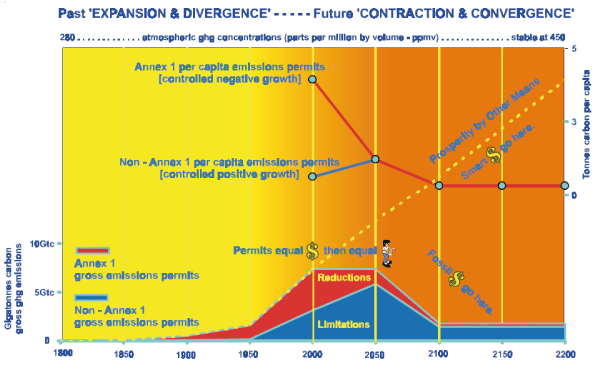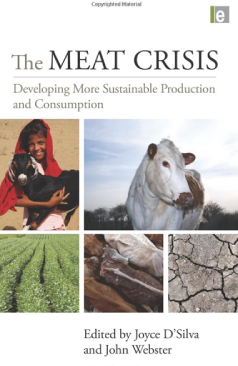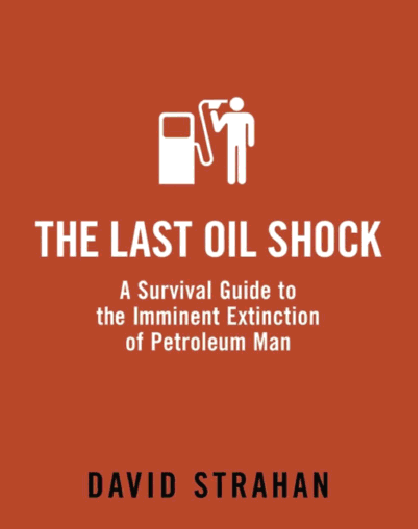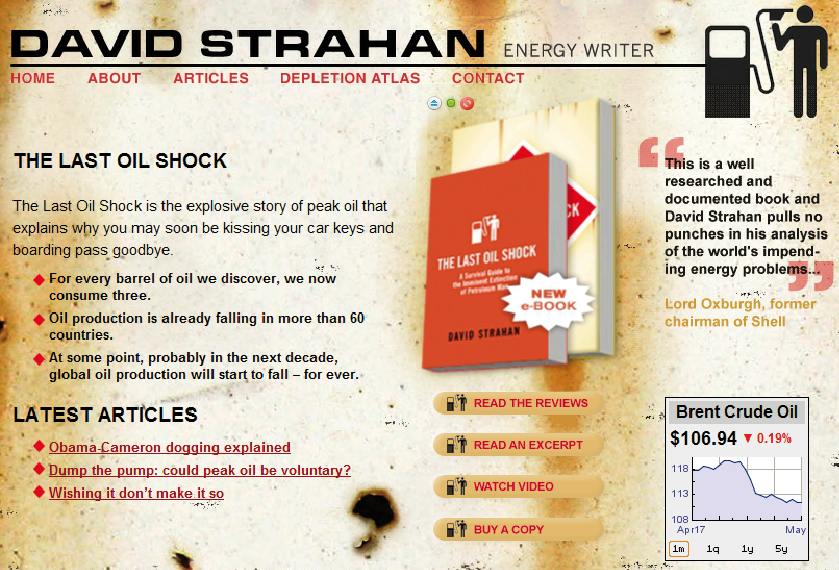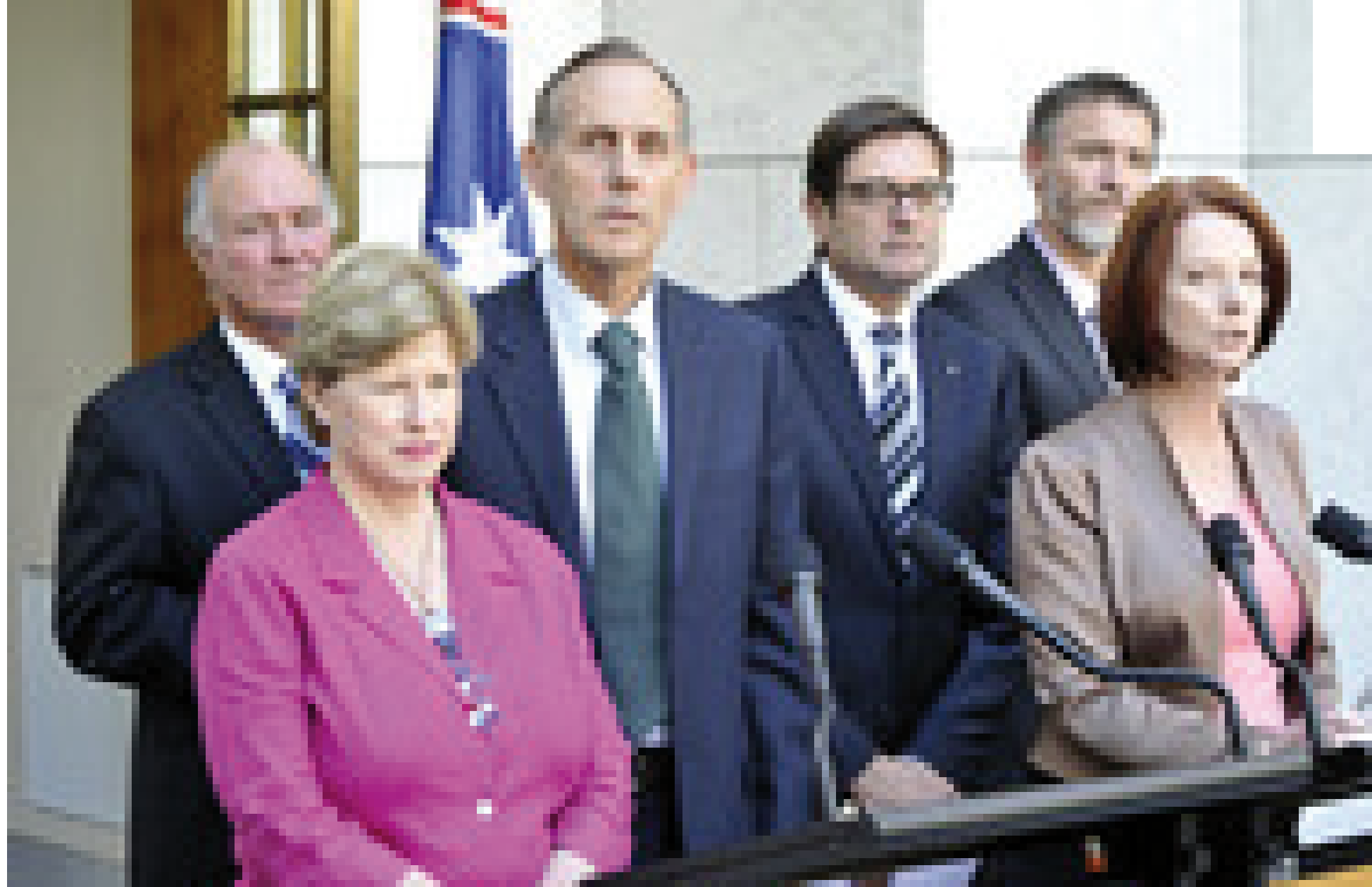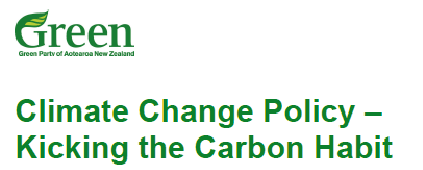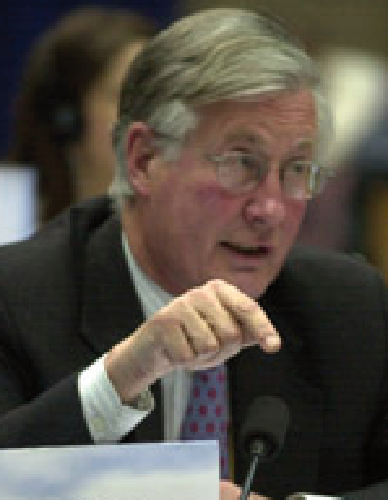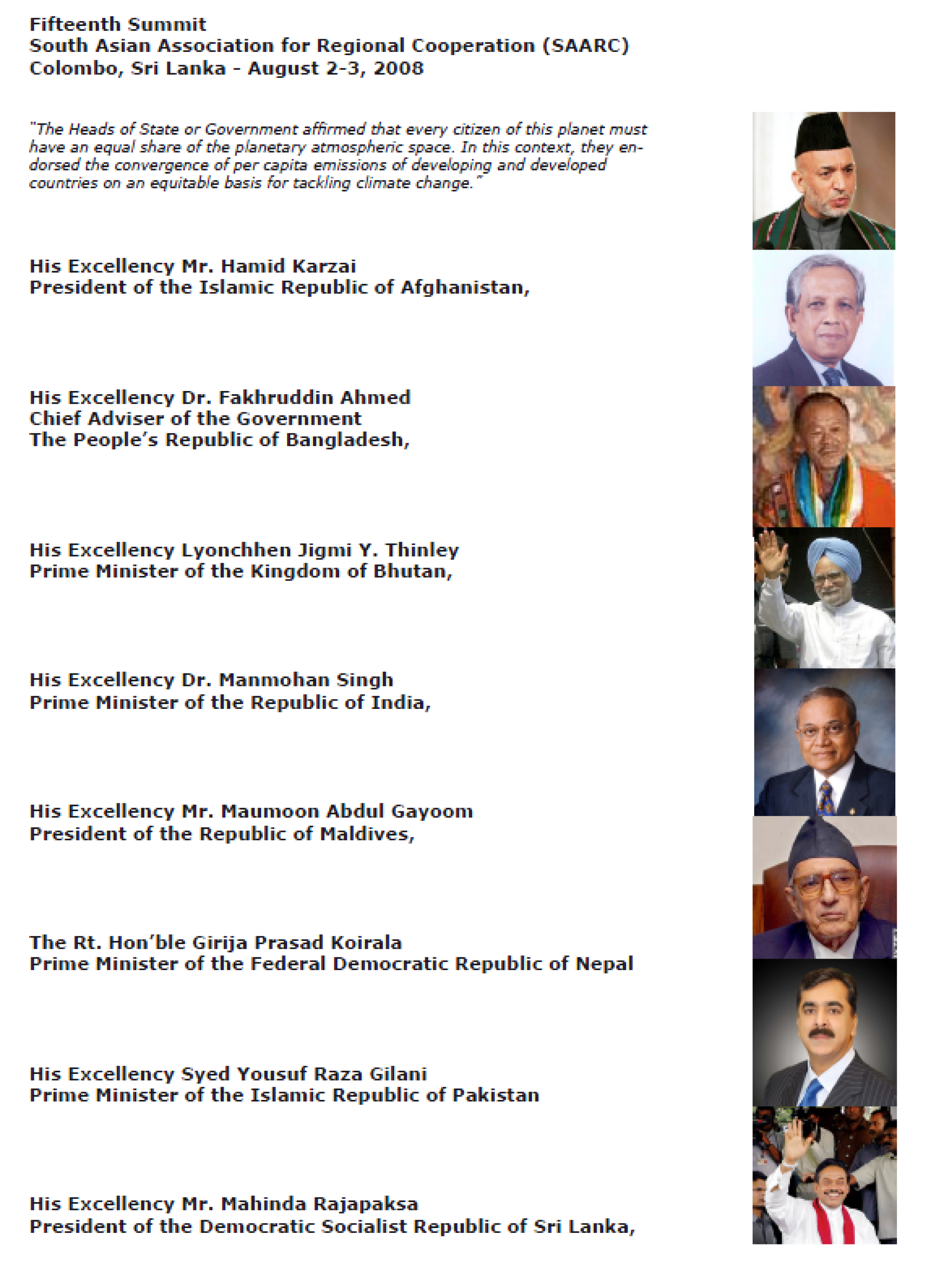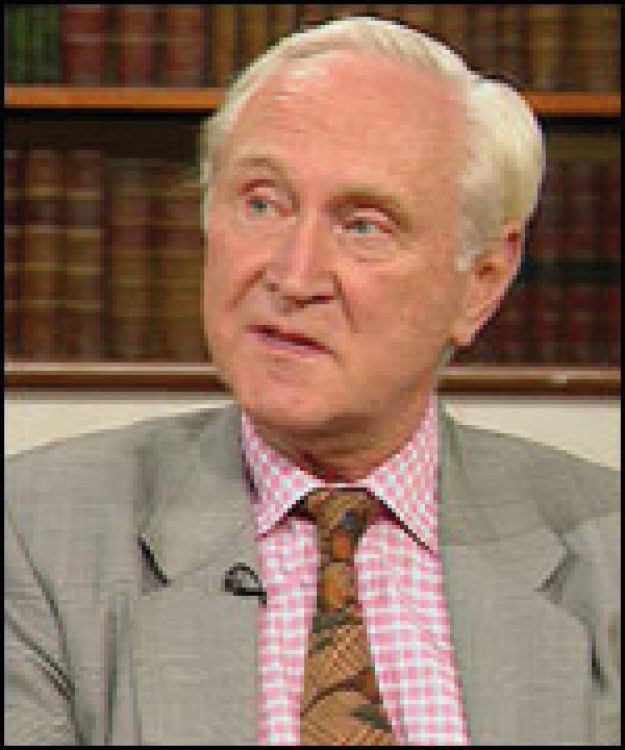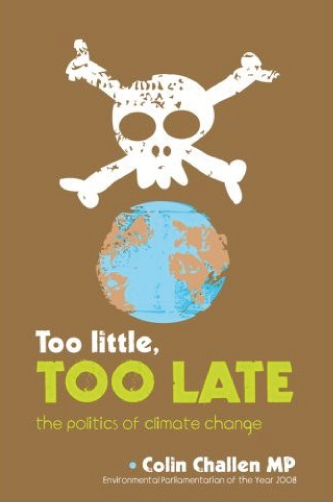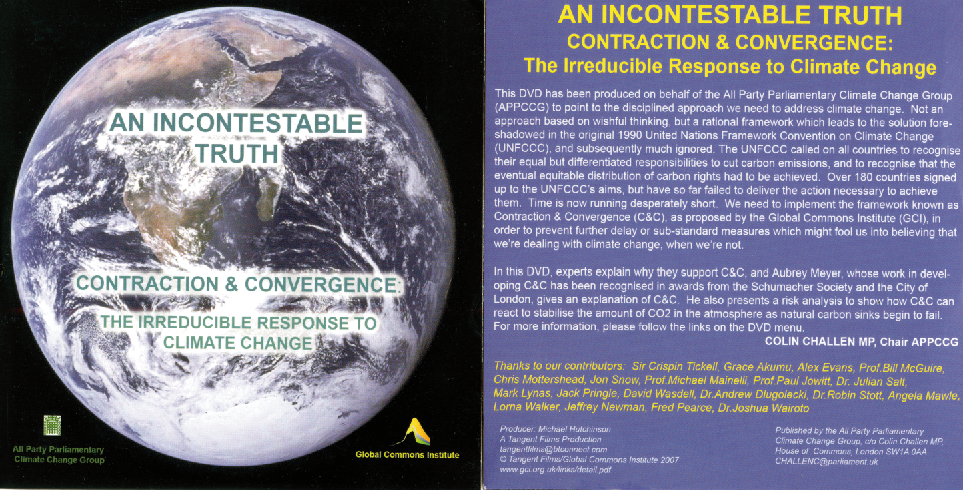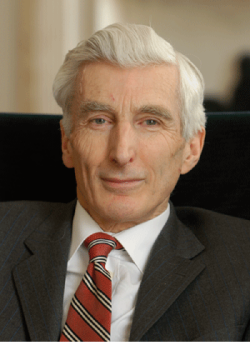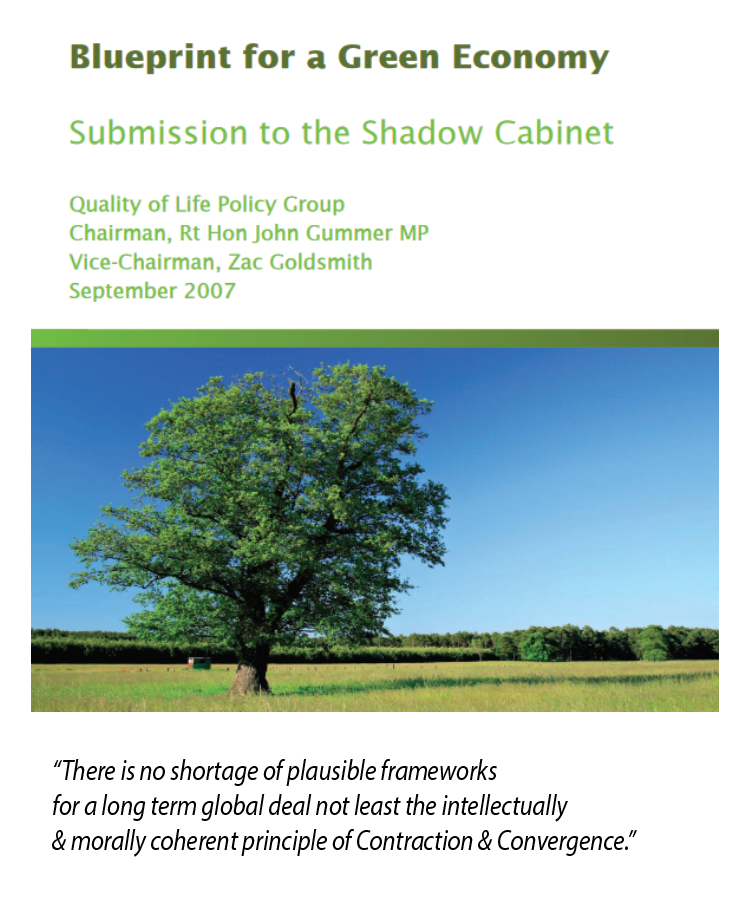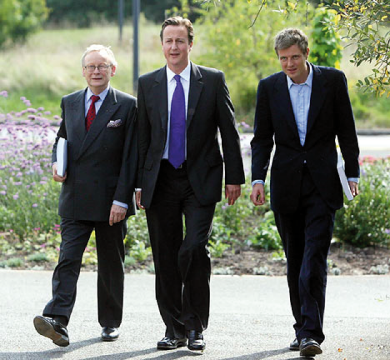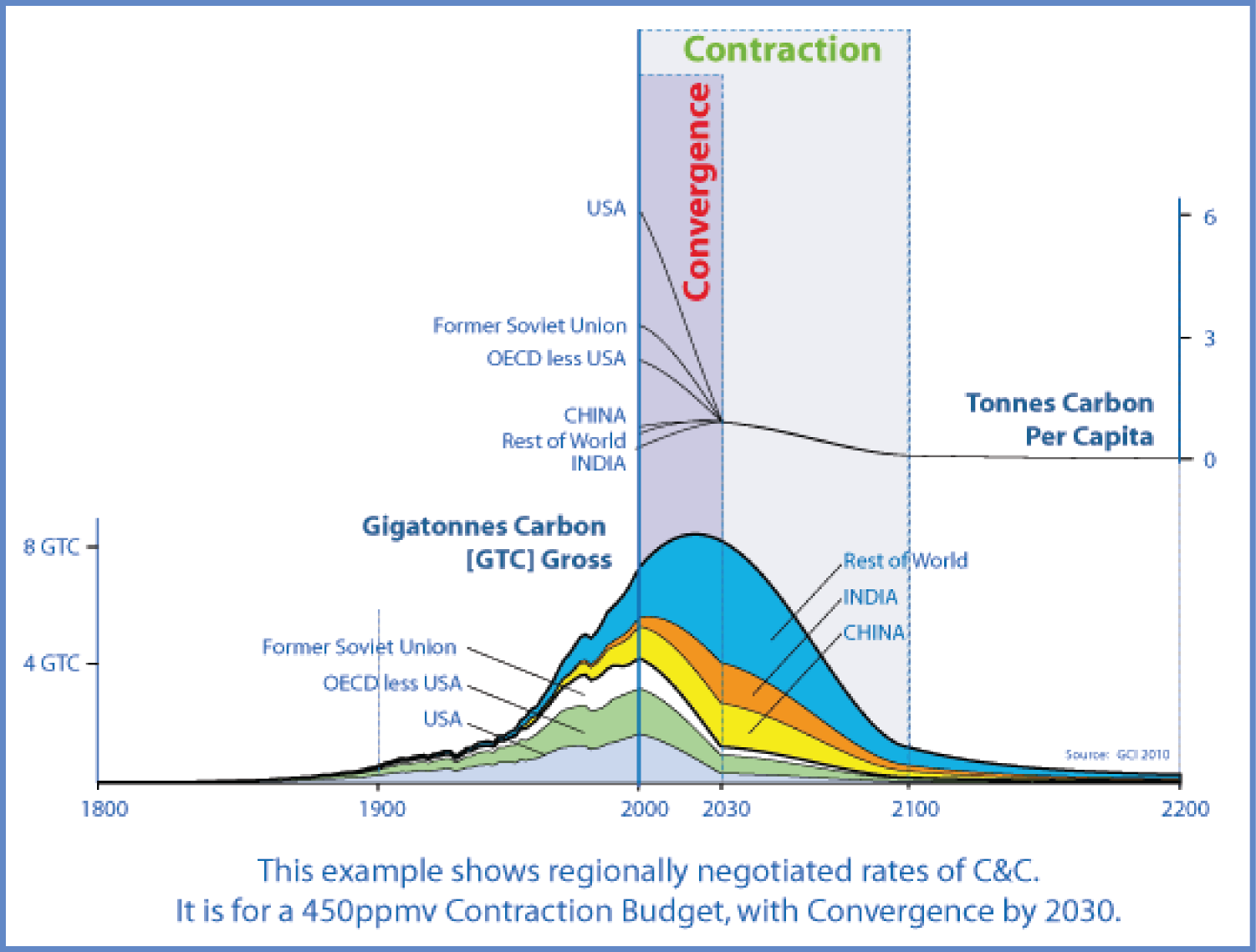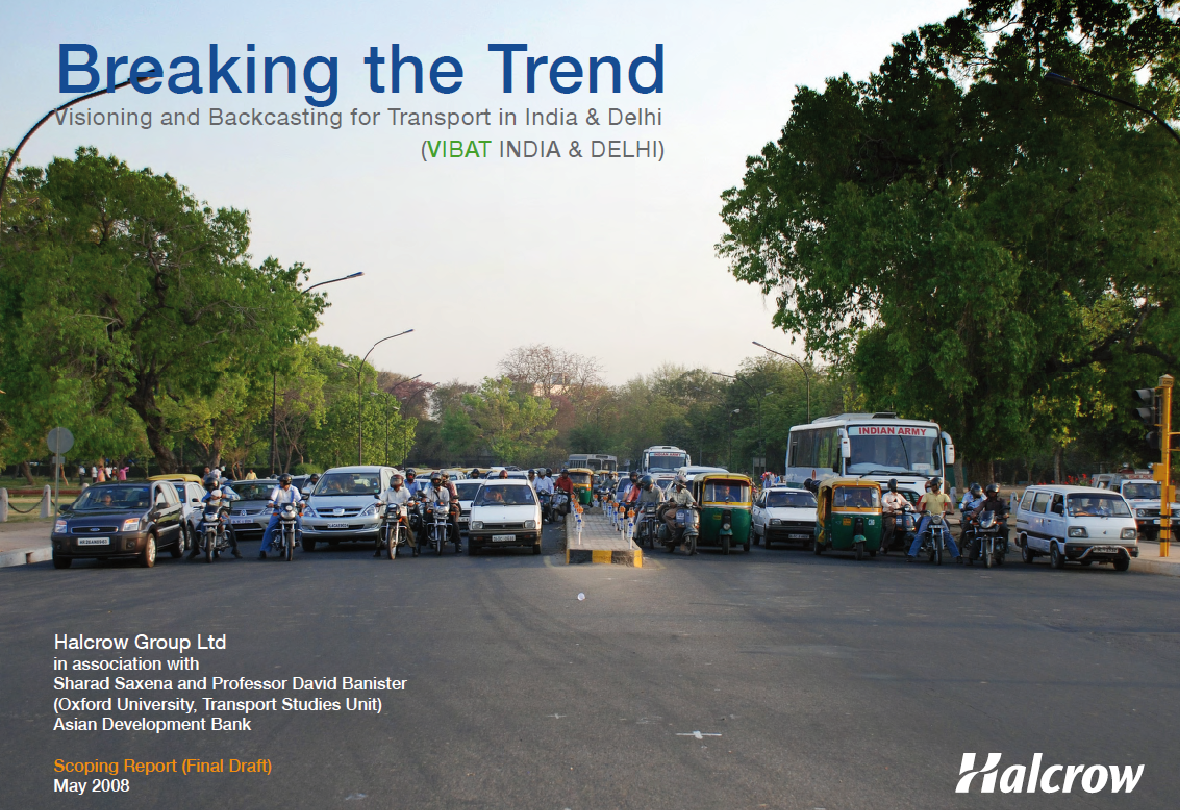SIMPLIFYING & QUANTIFYING JAMES HANSEN�S CARBON-CONTRACTION BUDGETS FOR 350 ppmv
On page 2 of the document here is a composite graphic from James Hansen.
It is from this work that the 350.org campaign takes its name and so its position.
- Hansen�s graphic shows 3 factors: - Future CO2 [1] emissions [2] concentrations [3] temperature,
- It shows them at 3 rates for achieving 350 ppmv: - [1] higher [2] medium and [3] lower
- Hansen�s graphic shows these as a time-series running from 1990 - 2300.
- He has put all of these factors and these rates on the same graphic.
~~~~~~~~~~~~~~~~~~~~~~~~~~~~~~~
For a more detailed understanding, this document breaks this down,
particularly so the weight of the carbon-contraction-budgets can be calculated and shown.
- Higher means higher or a faster rate of carbon-contraction of emissions.
- Medium means a rate of emissions contraction in between higher & lower.
- Lower means lower or a slower rate of carbon-contraction of emissions.
On page 3 the time series is reduced to 1990 - 2100 with all 3 factors at all 3 rates.
On pages 4, 5 & 6 the 3 the rates are shown separately.From this it easier to see the following: -
At the higher rate: -
- Emissions go negative by 2020
- Budget weighs 124 Gt C to 2020, then followed by -156 Gt C to 2100
- Concentrations fall back to 350 ppmv by 2050
- Temperature net-rise 0.4 of a degree by 2100 against 1990
At the medium rate: -
- Emissions go negative by 2050
- Budget weighs 176 Gt C to 2050, then followed by - 63 Gt C to 2100
- Concentrations fall back to 350 ppmv by 2100
- Temperature net-rise 0.8 of a degree by 2100 against 1990
At the lower rate: -
- Emissions go negative by 2080
- Budget weighs 320 Gt C to 2080, then followed by - 4 Gt C to 2100
- Concentrations fall back to 350 ppmv by 2300
- Temperature net-rise 1.4 of a degree by 2100 against 1990
The model also appears to assume that he's figured out the strength of the feedbacks throughout, which is probably not too reliable.
28 July 2012 - "This is why C&C is so important." Veteran Co-Founder of New York Greens Lorna Salzman.
For those of you not yet familiar with Contraction and Convergence, Aubrey Meyer's brilliant proposal, check it out hereThere's a lot of math here and there, but the proposal is clear, sane, science based and fair. All nations start cutting their CO2 emissions in order to arrive TOGETHER at a point of zero (or close to it) emissions at the same time. In this time period, each individual is given a carbon allocation equal to every other person on the planet. So the per capita reduction is equal!
However, since there are many countries with larger populations AND larger energy consumption at present, the total reduction in these countries AS A WHOLE will be larger and will have to diminish faster than those of countries with small populations and smaller consumption. Convergence means at a certain date, the earth's average temperature and cumulative total emissions will remain at a level that assures we stay below a 2 degree C. increase in temperature.
Bill McKibben was presented with this proposal by Meyer quite a while ago and has never responded. Instead he is supporting Marxist Tom Athanasiou's Greenhouse Development Rights proposal, which would require larger faster cuts by larger consuming countries before countries like China and India are required to do any substantive reductions in emissions. Other countries could also take their time. It is important to understand that the USA is not the only villain in this scenario; many less developed countries still aspire to the same level of development and consumption as the USA presently has. We all know that this is impossible but it hasn't stopped them. Nor has it stopped the industrialized world from trying to wriggle out of even minimal responsibility for cutting emissions. China and India are getting a free pass, as are many other countries. Our government will never sign any agreement that allows this, and quite rightly. That's why C&C is so important.
Both population growth and consumption growth will continue to exacerbate the problem, but McKibben still refuses to address these at all. He supports a "fee and dividend" (the polite term for a carbon tax) but has done nothing to promote it. He says he opposes fossil fuel subsidies but supports Bernie Sanders' bill that would phase them out over a ten year period, at which time it is too late. He has never prepared any energy legislative agenda on mandatory efficiency standards. In other words, his whole persona is nothing but a void, with some clever p.r. around the back such as his new road circus. This is the religiously inclined wuss who the media, government and many citizens consider Our Fearless Leader. But we are Leaderless and Fearful.
The Contraction and Convergence proposal needs to be widely circulated and supported. Its science and math are, unlike McKibben's, reliable. Its goals are honest and consistent with the math. It is equitable and just. I urge you all to read it and support it.
Lorna Salzman
28 July 2012 - Here's a vote worth having; "Can C&C Vision be feasible & profitable?" Rocky Mountain Institute
The equitable vision of "contraction and convergence," where all countries have the same carbon emission rights per person and everyone continues to get richer, especially in developing countries, could head for carbon reductions around 90% over the next century. Could that grand vision of a richer, fairer, cooler, and safer world actually be feasible and profitable?
ASAHI GLASS Blue Planet Lecture
Amory Lovins28 July 2012 - Exemplary and truly Inspiring example of local investment in Clean EnergySee also Guardian story on bid to create world's largest community solar farm reaches funding milestone Co-op's bid to buy 5MW solar power farm in Wiltshire provides a model other communities around the UK could copy
27 July 2012 - "I am happy to support the proposal." Professor John Quiggin, Queensland UniversityDear Aubrey,
I support the principle of C&C and am happy to endorse your proposal on that basis.
Best wishes
John Quiggin
John Charles Quiggin is an Australian economist, a Professor and an Australian Research Council Federation Fellow at the University of Queensland, and a member of the Board of the Climate Change Authority of the Australian Government.
Contraction, convergence, compensation
Until recently, much discussion of longer-term international agreements on climate change mitigation has implicitly assumed that historical starting points such as 1990 will continue indefinitely to play a role in the setting of emissions targets. Broadly speaking, the assumption has been that countries with high 1990 emissions levels will accept cuts relative to those levels. On the other hand, countries with low 1990 emissions levels will accept constraints that allow some growth relative to their existing emissions but not enough to equal emissions from historical high emitters.The growth of China (and some other fast-growing developing countries) since the negotiation of the Kyoto protocol in 1997, along with new evidence on the sensitivity of global systems to climate change, has rendered these assumptions collectively untenable. China has already surpassed, or will soon surpass, emissions levels consistent with a CO2 equivalent concentrations target of 450 ppm or 550 ppm. It follows that any sustainable post-Kyoto agreement must eventually require cuts in Chinese emissions. It is obviously unreasonable to expect China to cut emissions when it is still far below levels prevailing in developed countries unless the principle of permanent differentiation on the basis of historical emissions is abandoned.
That is, the only reasonable basis for proposing cuts in existing emissions from China and other fast-growing developing countries is an agreement on eventual (say by 2050) convergence on a common emissions level.
One concern that has been raised is that an emissions right expressed on a per person basis will encourage countries to increase their population. Analytically, this is only correct for countries with current and projected emissions well below the common target, since otherwise an increase in population only increases the cost of reducing emissions. On the other hand, it is precisely for these countries that small economic incentives might make a substantial difference to population growth.
Within climate change negotiations, it might be possible to negate these concerns by making emissions rights proportional to, say, UN medium population projections, rather than actual population in 2050. This would have the benefit of specifying an actual emissions target.
A �contraction and convergence� approach still implies substantial differences in favour of historical high-emitters between now and 2050. This has raised the question of compensation. However, it seems more appropriate to focus on notions of bargained consensus. What is required from developed countries is sufficient encouragement, including technology transfers and expansion of the Clean Development Mechanism, to make participation in a contraction and convergence agreement an optimal choice for developed countries. In practice, it is likely that the agreement of a few large countries (China, India, Brazil) will make holding out by smaller developing countries an unattractive option.
27 July 2012 - "Happy to endorse C&C submission to UNFCCC." Frans Timmerman co-author 'Life Without Money'Dear Aubrey
As co-editor of Life Without Money and co-author of the Contract and Converge chapter in it, I am happy for you to add my signature to your "Contraction & Convergence" [C&C] proposal to the UNFCCC.
Frans Timmerman BSc
Frans Timmerman has been a prominent member of the socialist Left of the Australian Labor Party (ALP) for decades, leading the ALP Pledge faction in the 1990s. He has been a political adviser to several members of parliament and, in 2010, was made a Life Member of the ALP. In 1973, Frans graduated from the University of New South Wales with a BSc, majoring in mathematics. He has been associated with publishing since 1970 as a journalist, academic editor and bookseller. He is an Accredited Editor with the Institute of Professional Editors. Frans co-wrote, with Anitra Nelson, the introductory 'Use value and exchange value' and final 'Global strategy: contract and converge' chapters of Life Without Money and took primary responsibility for all the editing. He co-edited Free Palestine, published by the General Palestinian Delegation in Australia (1979�90), and was one of the authors of Marxism, the Nation and the Jewish Question (1988) which is still available at Gould's Book Arcade, 32 King Street, Newtown, NSW, Australia.
Life Without Money, by Anitra Nelson and Frans Timmerman
PART I. CRITIQUES OF CAPITALISM AND COMMUNISM
- CONTENTS Preface Acknowledgements List of Boxes Abbreviations
- Money v. Socialism, by Anitra Nelson - Honorary Associate Professor of RMIT University (Australia)
- Work Refusal and Self-Organisation, by Harry Cleaver Associate Prof of Economics at the University of Texas (Austin)
- Money, Markets and Ecology, by John O�Neill - Hallsworth Professor of Political Economy at the University of Manchester (England)
- The Value of a Synergistic Economy, by Ariel Salleh - Researcher in Political Economy at the University of Sydney (Australia), and previously Associate Professor in Social Ecology at the University of Western Sydney
- A Gift Economy, by Terry Leahy - Senior Lecturer in Sociology and Anthropology at the University of Newcastle (Australia)
PART II. ACTIVISM AND EXPERIMENTS
- Non-Market Socialism, by Adam Buick - Member of the Socialist Party of Great Britain and regular contributor to the Socialist Standard
- Self-Management and Efficiency, by Mihailo Markovi - Widely published Serbian philosopher and scholar, worked for many years in the University of Belgrade Faculty of Philosophy
- Labour Credit � Twin Oaks Community, by Kat Kinkade with the Twin Oaks Community - Founding member of Twin Oaks Community, established in Virginia (USA) in 1967, and co-founder of the East Wind and Acorn communities, and the Federation of Egalitarian Communities, which still exist today
- The Money-Free Autonomy of Spanish Squatters, by Claudio Cattaneo - Obtained his PhD at the Institute for Environmental Science and Technology (Universitat Autònoma de Barcelona) and teaches ecological economics at Carlo Cattaneo University (Italy)
- Global Strategy: Contract and Converge, by Anitra Nelson and Frans Timmerman - Prominent socialist faction leader in the Australian Labor Party for decades and a political adviser to several members of parliament. Co-editor of Free Palestine published by the General Palestinian Delegation in Australia (1979�1990) Notes on Contributors Index
27 July 2012 - "Happy to endorse C&C submission to UNFCCC." Prof Anitra Nelson RMIT University MelbourneHi Aubrey
As co-editor of Life Without Money and co-author of the Contract and Converge chapter in it I am happy for you to add my signature to your UNFCCC proposal:
Keep up the good work.
Cheers
Anitra
Associate Professor Anitra Nelson,
RMIT University, Melbourne, Australia.Life Without Money, by Anitra Nelson and Frans Timmerman
PART I. CRITIQUES OF CAPITALISM AND COMMUNISM
- CONTENTS Preface Acknowledgements List of Boxes Abbreviations
- Money v. Socialism, by Anitra Nelson - Honorary Associate Professor of RMIT University (Australia)
- Work Refusal and Self-Organisation, by Harry Cleaver Associate Prof of Economics at the University of Texas (Austin)
- Money, Markets and Ecology, by John O’Neill - Hallsworth Professor of Political Economy at the University of Manchester (England)
- The Value of a Synergistic Economy, by Ariel Salleh - Researcher in Political Economy at the University of Sydney (Australia), and previously Associate Professor in Social Ecology at the University of Western Sydney
- A Gift Economy, by Terry Leahy - Senior Lecturer in Sociology and Anthropology at the University of Newcastle (Australia)
PART II. ACTIVISM AND EXPERIMENTS
- Non-Market Socialism, by Adam Buick - Member of the Socialist Party of Great Britain and regular contributor to the Socialist Standard
- Self-Management and Efficiency, by Mihailo Markovi - Widely published Serbian philosopher and scholar, worked for many years in the University of Belgrade Faculty of Philosophy
- Labour Credit � Twin Oaks Community, by Kat Kinkade with the Twin Oaks Community - Founding member of Twin Oaks Community, established in Virginia (USA) in 1967, and co-founder of the East Wind and Acorn communities, and the Federation of Egalitarian Communities, which still exist today
- The Money-Free Autonomy of Spanish Squatters, by Claudio Cattaneo - Obtained his PhD at the Institute for Environmental Science and Technology (Universitat Autònoma de Barcelona) and teaches ecological economics at Carlo Cattaneo University (Italy)
- Global Strategy: Contract and Converge, by Anitra Nelson and Frans Timmerman - Prominent socialist faction leader in the Australian Labor Party for decades and a political adviser to several members of parliament. Co-editor of Free Palestine published by the General Palestinian Delegation in Australia (1979�1990) Notes on Contributors Index
25 July 2012 - Less rubric more metric: "Issue remains actually doing the maths with UNFCC-compliant relevance."Bill McKibben rightly says, 'do the maths' and then doesn't.
Actually doing the maths remains the issueIf Bill has some alternate maths, may we please see it?
With 350.org Bill is organizing to 'give-hope-and-a-role' to young people. That's fair enough; anti-tar-sands, anti-fossil-fuel-subsidies campaigns make a lot of sense and power to them.
However, in reality Bill seems to have waived any propspect of Inter-Governmental UNFCCC-compliant arrangements at all, let-alone ones aimed at 350 ppmv . . . and let's face it, cap-and-dividend isn't exactly a global deal and is hardly the talk of the town in Beijing and Delhi . . . .
Well, if that's where you are, then say so. But if that is we all are, then where are we; what hope is there? - chaos, confusion and conflict looms . . .
Its true the 'global-problem' has now become 'supra-national' and 'private'. In other words, it is no longer just 'inter-national' and 'public'. None of that is directly the fault of climate change campaigners.
However, how anyone [let-alone Governments] organise to achieve global UNFCCC-compliance if we're faced with all that and on-going fights about 'money', God alone knows and some climate-campaigning does indirectly help to generate this.
What's the context? Now, on top of $30 trillion of off-shore tax-avoidance, Occupy apparently publish at the beginning of August a global estimate of corporate and private 'derivatives' valued at $350 trillion [!] - that's 5 times the value of GDP Globally . . . !
So when US Green Lorna Salzman accuses Bill of actually 'pimping for Capitalism' because he takes money from them to finance 350.org I think she has a point that's not strictly limited just to him.
~~~~~~~~~~~~~~~~~
However Bill's 350.org are deluding themselves when they are also pushing Greenhouse Development Rights [GDR] with the divisive and completely unworkable *negative emissions entitlements* to the US after 2025. The GDR report shows it thus - negative emissions entitlement to the US after 2025: -
Its relevant to know that Tom Athanasiou and Paul Baer of EcoEquity opposed C&C/GCI tooth-and-nail for 10 years after COP-6 in 2000 because the NGOs didn't like C&C and EcoEquity were going to 'improve it'.
Finally, when the report came out C&C was denounced for being 'not fair enough'. They turned the whole thing into a fight indexed to a global personal income threshold of around $10,000 per head [if you were above it, you were liable! tax collectors must have been licking their lips].
GCI rejected that monetary numeraire [$] and didn't choose that fight. However they chose both and no-one sensible knows why they also chose to attack and misrepresent GCI.
So it was especially interesting to see the recent GDR presentation to UNFCCC AWGLCA-table [from GDR operative Sivan Karth from SEI] a few weeks back, to find that GDR-advocacy has: -
- dropped all reference to GDR name [why?]
- dropped all reference to *negative emissions entitlements* to the US by 2025 [why?]
- put up C&C curves for global budget [since they are attacking it - why?]
- kept personal income accounts indexed to future responsibility
Tom Athanasiou's subsequent explanation for points one and two came in a personal e-mail [25 07 2012] which said: -
"I’m in Japan were I just gave a presentation on equity after Durban. I assure you that I used the term 'Greenhouse Development Rights' a number of times."
[And here's the key point]: -
"There are occasions, however, and the Bonn meeting was one of them, in which we think it’s more useful to make 'meta' points about the structure of the problem."
The UN knows what the problem is and doesn't need to be further patronised by 'experts' who linked their climb-down to circumloquacious 'meta-points'. This is obviously true when in fact what GDR authors put up at the UNFCCC meeting was essentially C&C, which has been there for at least 16 years.
Here is the graphic they used in place of the one above.
The graph they actually used is here, effectively a 'weak [and obviously hand-drawn] version C&C'So why are the 'GDR-experts' really changing their message at the UNFCCC at this moment?
With *Meta-Points* what Tom Athansiou really means is that at that Bonn UNFCCC meeting, if they'd tried to push *negative emissions entitlements to the US* to the international meeting [where the Chinese Government was presenting and the US Government would have been present], they would have been asked to step down for making a very divisive argument that the UN has no way of processing.
GDR authors knew this very well and so discreetly dropped the name and *that demand* in advance 'in favour of making what they now evasively call *Meta-Points* . . . '. . . and the graph they actually used was effectively 'weak C&C' which they spent 10 years attacking as not fair enough!
Are they now climbing down and if so why? Is it because C&C as an organising principle continues to draw support from sober-minded people - I doubt it. Is it because of a realization that divisive ideas generate division - I doubt it. Is it a piquey attack from the 'not-invented-here' syndrome? Who knows.
The relevant question is whether they have ever presented their 'real GDR' to the 'real US Senate', let alone secured support for it there. And that questions is steadfastly avoided because they obviously never will get one vote for it there.
C&C did get support there.
GCI Briefing on C&C and the Byrd Hagel Resolution
In June 1997, the US Senate passed by 95 votes to 0 the Byrd Hagel Resolution, which stated that: -“The US should not be a signatory to any protocol to, or other agreement regarding, the UNFCCC of 1992, at negotiations in December 1997, or thereafter, which would mandate new commitments to limit or reduce greenhouse gas emissions for the Annex I [developed country] Parties, unless the protocol or other agreement also mandates new specific scheduled commitments to limit or reduce greenhouse gas emissions for Developing Country Parties within the same compliance period.”
C&C is completely consistent with this Senate Resolution, as shown in this image. There is no other first-order way to calculate what the Resolution calls for, except universally uniform limitations or reductions, which is what the whole row had been about. For this reason, GCI offered support to the US and they accepted it.
GCI has consistently argued in favour of *negotiating the rate of convergence* as a way of drawing the two sides together. However, preferring the divisve absurdity of *negative entitlement* as above GDR authors still refuse to represent or even acknowledge this point though C&C has generated a lot of supoport.
25 July 2012 - "C&C & Earth Democracy" Vandana Shiva - Torino 2010 Capitale Europea Dei Giovani
The strategies for low power are based instead on explicitly challenging the economic and productive system as a whole and proposing ways of equitable redistribution of the global commons , such as arable land, water and atmosphere, and the decrease exploitation of these resources by the industrialized west, through a greater awareness, efficiency and decentralized energy. These are known as contraction and convergence and what Vandana Shiva calls "Earth Democracy".In this view, adaptation and limitation can only go hand in hand. The citizens of the industrialized north are called to a greater awareness of the climate impact of their lifestyles, in transport, food and consumer choices, and management of energy in their homes. At the same time, communities autopoietic, or even based on self-subsistence and self-organization, can act in this context by precious example for models of decentralization overall livelihood and production systems.
This is not just to accelerate the development of local communities, or a development fuelled with high power in a centralized and not adapted to the ecosystems involved, but on the contrary, to facilitate recovery of the ability to produce and share materials and energy on a local scale and information and knowledge on a global scale. The best strategies limitation and adaptation to climate chaos consist, in this view, to preserve and enhance the ecological biodiversity and cultural heritage on the planet, enriching technology to low power today available.
~~~~~~~~~~~~~~~~
Ultimately, the goal must be to achieve international accords on formulas that achieve �contraction and convergence,� i.e., formally mandated global economic formulas that lead to overall economic �contraction��to live within realistic planetary limits�and �convergence� at an agreed global standard of �sufficiency� for all, as planetary health and resources permit. We believe that such a transition can lead to successful responses to this crisis, increased equity within and among countries, and a renewed sense of personal and global good feeling, well-being and peace.
25 July 2012 - "C&C - A Sustainable and Equitable Resolution." The Meat Crisis, Joyce Da Silva & John Webster
Contraction and Convergence: A Sustainable and Equitable ResolutionThe composite issue of achieving modest, equitable and environmentally sustainable animal-source foods consumption can be best tackled via the principle of ' contraction and convergence' This intuitively appealing strategy originated with contraction-and-convergence modelling of future changes in per capita GHG emission levels, to ensure contraction of total global emissions via convergence on a common level of per capita emission (Meyer, 2000). This strategy has gained increasing recognition, stimulating its suggested application to solving the historically based disparities between high- and low-income countries for many greenhouse-related production and consumption practices.
In the present context, then, the 'contraction ' component requires that the world commit \0 reducing the global total intake of meat (especially red meat from ruminant animals) by some specified date in future, This would, ideally, be part of a portfolio strategy to mitigate climate change - across various sectors such as commerce, energy generation, urban planning and human behaviour. The 'convergence' component specifies that the contraction of consumption is achieved equitably Thus, today's high-consuming populations would reduce their intake downwards 10 the agreed global per capita level of sources, is now being made in relation to some of the feedstock produced for biofuels.)
Overall, then, this contraction and convergence strategy, in relation to world meat consumption, would be a win-win strategy. Greenhouse gas emissions would be reduced and global warming would be slowed. Health risks in high-consuming populations would be lowered, while gains in nutritional status would occur in lower-income countries via reduction of deficiencies of iron, protein and energy intake with benefits to child health and development in particular. In lower-income countries, the 'convergence' ceiling figure of 90g of meat per day should mostly preclude any increases in risks of cancer, heart disease or obesity-related diabetes.
"The Contraction and Convergence strategy, phased in over several decades, would therefore be good for the planet, good for enhancing global equity and generally good for population health."
Meat Crisis
Joyce Da Silva and John Webster24 July 2012 - "Getting C&C will be as tough as getting the Rimini Protocol." The Last Oil Shock, David StrahanAubrey,
Of course. Please add me to the list.
Good luck,
David Strahan
Another approach that is attracting support among policymakers intemationally is known as contraction and convergence, which although designed principally to tackle climate change could also be usefully deployed against oil depletion. Contract and Converge is based on the idea that the only safe and fair way to apportion the right to pollute the world can be on an equal per capita basis. A global agreement would establish scientifically the upper limit of atmospheric carbon concentration that can be tolerated, divide the ‘acceptable’ emissions between the world's population and set a date by which all countries have to hit this per capita level. After a time, each country’s cap would be fixed regardless of its subsequent population growth. This overall approach implies that some developing nations such as China could continue to increase their emissions for a time, while the industrialized nations would have to begin steep cuts immediately, again probably using TEQs. The biggest polluters such as America would obviously have to cut hardest, but even countries such as Britain would have to make enormous reductions. If the agreement were to stabilize atmospheric C02 at 550 parts per million - which many scientists regard as dangerously high - UK emissions would have to fall from the current ten tonnes per person per year to less than four tonnes by 2050. Four tonnes is the amount generated by one person taking a round trip by plane between London and New York. For this reason, despite the undoubted fairness of the idea, it would be just as hard to secure agreement around contract and converge as the Rimini Protocol.
David Strahan is an award-winning investigative journalist and documentary film-maker who specializes business and energy. For a decade he reported and produced extensively for the BBC’s Money Programme and Horizon strands. He is also the author of The Last Oil Shock: A Survival Guide to the Imminent Extinction of Petroleum Man, published by John Murray, and continues to write, broadcast and consult on energy. He is a trustee of the Oil Depletion Analysis Centre, fellow of the RSA, and an honorary researcher at the Aon Benfield UCL Hazard Research Centre.
24 July 2012 - "We Propose C&C." Henkel, Gebauer, Lodeman, Mohaupt, Partzsch, Ziegler.
In the paradigmatic applications of a theory of strong sustainability, we propose the climate policy after Aubrey Meyer’s concept of Contraction and Convergence.
Social Entrepreneurship Status Quo 2009 Marianne Henkel, Jana Gebauer, Justus Lodemann, Franziska Mohaupt Lena Partzsch, Rafeal Ziegler24 July 2012 - "C&C a pragmatic strategy to overcome the climate impasse." Professor Roberto De Vogli MichiganAubrey
Absolutely yes!
Roberto
Roberto De Vogli, Ph.D., M.P.H.
Associate Professor in Global Health
University of Michigan
Division of Population Health, University College London
The developed world must not only help poor countries with these issues, but also commit to the principle that each world citizen has an equal entitlement to the atmosphere. This means that everyone must accept that we all have an equal right to emit the same amount of carbon dioxide. In recent years, there have been various proposals to tackle climate change on the basis of this principle.More than two decades ago, Aubrey Meyer, founder of the Global Commons Institute, proposed a model called 'contraction & convergence' to reduce greenhouse gas emissions enough to ensure “safe and stable” concentrations in the Earth’s atmosphere. The deal is this: first, the scheme sets a cap for greenhouse gas concentrations worldwide and a date by which targets should be achieved (e.g. 350 ppm by 2050.) Then, it ensures that the mechanism used to accomplish this target is fair by dividing the sum of greenhouse gas emissions between all the people of the world, and allocating to each nation, on the basis of its population, a respective quota (contraction). The model foresees that, over time, the carbon targets of developed and developing countries converge to a common per capita pollution level, with all countries accepting the same emission goal consistent with a safe target of 350 ppm globally (convergence.) The global “carbon cake” would be shared between the different nations of the world in the form of “tradable entitlements”, with individual countries negotiating their own quotas proportional to national populations. While converging towards equality of pollution, nations that want to produce more carbon dioxide than their share would be obliged to buy unused quota from other nations. The mechanism also permits trading so that developing countries unable to use up their entire entitlements can sell them to rich nations in exchange, for example, for projects of development, health and education.
Some free marketeers and neo-conservatives, while recognizing that climate change is not a hoax, find the “contraction & convergence strategy” too “biased” towards the developing world’s priorities. After all, they have never made a secret of their predisposition to have the interests of the elite in rich societies at heart. Their argument, however, blissfully ignores that rich countries account for only 15% of the world’s population, yet emit about 50% of carbon dioxide emissions worldwide. Others have also criticized “contraction & convergence” for being utopian and unrealistic. It is true that nobody knows whether this scheme will ever work. What we do know, however, is that rich countries must play a leadership role in the fight against climate change. As Speth explained: “The lion’s share of the blame must go to the wealthy, industrial countries and especially to the United States.” He then added, “if the United States and other major governments had wanted a strong, effective international process, they could have created one. If they wanted treaties with real teeth, they could have shepherded them into being.” It is true that a binding agreement, such as the one proposed by Meyer, would require a massive political and economic undertaking at the global level. But there are no other choices left if we are to prevent irreversible climate change. As the American libertarian socialist, Murray Bookchin, once put it: “If we do not do the impossible, we shall be faced with the unthinkable.”
Global climate change agreements such as “contraction & convergence” must be adopted with reforms to reduce poverty and inequalities. One does not need to be a Marxist to understand why. Calling for a more equitable distribution of resources is not a wish for a classless society where all wealth is equally shared or is concentrated in the hands of a big government. Instead, it is a pragmatic strategy to overcome the climate change impasse. Affluent nations must recognize that any global environmental treaty that is perceived as unfair, or that does not take into account the urgent needs of people in the developing world, is destined to fail. With the world facing an ecological crisis without borders, nothing has become more practical for the West than turning its past wrongs into rights by assisting developing nations in assembling their ecological programs, eradicate poverty and educate women. This would not just be an act of generosity, but also of enlightened self-interest. The reason is simple. As Dipesh Chakrabarty once observed, “unlike the crises of capitalism, there are no lifeboats for the rich and the privileged” that will save them from a future climate disaster.
Progress of Collapse
Roberto De Vogli23 July 2012 - "Very happy to continue supporting C&C." Romayne Phoenix UK Green Party Trade Union GroupDear Aubrey,
Very happy to continue supporting C&C.
Romayne Phoenix
Co-Convenor Green Party Trade Union groupDear Chris
UNFCCC-compliant Global Climate Change Framework
We all face an increasingly urgent situation with the threat of runaway rates of climate change occurring and the persistent failure to come to terms internationally to deal with this. COP-15 was another example of this and the odds for COP-16 appear no better as things stand.
So we write to you with the request to convene a high-level public meeting to focus on this predicament and the international need to establish a UNFCCC-compliant Global Climate Change Framework to redress this threat as soon as possible.
Contraction and Convergence is a prime example of this. It is a rational formulation for reconciliation of 'Climate Justice without Vengeance'. With the growing support for this approach internationally, we specifically note the positions taken in the UK context by: -Â
- The RCEP in 2000 that, "The government should press for a future global climate agreement based on the contraction and convergence approach [C&C], combined with international trading in emission permits. Together, these offer the best long-term prospect of securing equity, economy and international consensus."
- The UNFCCC Executive at COP-9 [2004] - achieving the objective of the UNFCCC,
"inevitably requires contraction and convergence".- The Liberal Democrat party that, "an agreement must be based on reducing emissions overall, while equalising emissions between the developed and developing worlds � the principle of contraction and convergence."
- Yourself and what you called the "morally compelling logic" of C&C.
- The All Party Parliamentary Group on Climate Change in the previous parliament.
- The UK Climate Act, which Adair Turner effectively characterised as C&C in evidence to the EAC and DECC select committees last year saying that converging to equal per capita entitlements globally is the only option that is,"doable and fair" for organising and sharing the full-term emissions-contraction-event to bring us to UNFCCC-compliance and that "if, for reasons of urgency the rate of global contraction has to be accelerated, for reasons of equity the rate of international convergence has to be accelerated relative to that."Â
Several ideas derived from C&C have surfaced since Kyoto with ideas that can be perhaps in various ways incorporated into C&C. However, there is an overwhelming need for an over-arching UNFCCC-compliant Framework that enables the globally competing interests of the over-consuming and the under-consuming to be reconciled with each other and with the objective of the UNFCCC in a non-random manner.
We feel that C&C is the veteran and indeed the apex example of this and urge you to consider our request. At Kyoto in December 1997 and shortly before they withdrew from these negotiations, the USA stated, “C&C contains elements for the next agreement that we may ultimately all seek to engage in.”
The adversarial reasons for their withdrawal then were in play again at COP-15: -
C&C answers this in a unifying and constitutional way and the need for this answer becomes increasingly critical.
With best wishesÂ
Yours sincerelyRomayne Phoenix
London Green Party Campaigns Officer
Colin Challen
Former Chair UK All Party Parliamentary Group on Climate Change
Professor Sir Tom Blundell FRS, FMedSci,
Department of Biochemistry, University of Cambridge,
Former Chairman of the Royal Commission on Environmental Pollution
Professor Peter Guthrie OBEÂ
Professor in Engineering for Sustainable Development in the UKÂ
Fellow of St Edmund's College Cambridge
Professor Martin Rees
Trinity College Cambridge
Sir John Houghton
President, John Ray Initiative
Professor Sir Roger Penrose, OM, FRS
Emeritus Rouse Ball Professor of Mathematics University of Oxford
Michael Hutchinson
CEO Tangent Films
The Rt Revd & Rt Hon Richard Chartres KCVO DD FSA
Bishop of London
Anthony J. McMichael, MBBS, PhD
Professor and NHMRC Australia Fellow National Centre for Epidemiology & Population Health
ANU College of Medicine, Biology and Environment
Australian National University
Honorary Professor of Climate Change and Human Health, University of Copenhagen
Ruth Reed
President Royal Institute of British Architects [RIBA]
Sunand Prasad
Former President of RIBAÂ
Maneka Gandhi
Member of Parliament India
David Wiggins
Wykeham Professor of Logic, Emeritus, Oxford University
Lord David Puttnam
Film Producer
Jack Pringle
PPRIBA Hon AIA FRSA Dip Arch BA(hons)
Partner Pringle Brandon LLP; Director WIRED architects Ltd
Chair Article [25] (UK reg. charity 1112621 for Development and Disaster Relief)
Vice Chair Construction Industry Council (CIC)
Council Member International Union of Architects (UIA)
Past President Royal Institute of British Architects (RIBA)
Commandeur Des Arts et Lettres
Sir John Harman FRSA Hon FICE, FIWEM, FIWM, FSE, DCLÂ
Professor Aubrey Manning, OBE,FRSE
Emeritus Professor of Natural History, University of Edinburgh
Tim Livesey
The Archbishop of Canterbury's Secretary for Public Affairs
Sir Crispin TickellÂ
Director Policy Foresight Programme Oxford University
Professor Sir Michael Marmot MBBS, MPH, PhD, FRCP, FFPHM,FMedSci
Director, UCL International Institute for Society and Health
MRC Research Professor of Epidemiology and Public Health, University College London
Chairman, Commission on Social Determinants of Health
Chairman, Department of Health Scientific Reference Group
Professor Sir Andy Haines
Director, London School of Hygiene & Tropical Medicine, London WC1E 7HT
[in a personal capacity]
Professor Brendan Mackey
The Fenner School of Environment & Society
The Australian National University
* Member, IUCN Council (Oceania Regional Councilor)
* Member, Earth Charter International Council
Professor David Orr Environmental Studies and Politics Oberlin College and James Marsh Professor at the University of Vermont.
Alistair Woodward
Head of the School of Population Health, University of Auckland
Dr Nigel Woodcock
Reader, Department of Earth Sciences, University of Cambridge
Roger Arthur Graef OBEÂ
criminologist and film-maker
Professor Bill McGuire
Director, Aon Benfield UCL Hazard Research Centre
University College London
Lord Anthony Giddens
Professor Emeritus LSE
Susan Richards
non-executive director and founder of openDemocracy
John CarstensenÂ
Chief Executive Officer Society for the Environment
Professor Mark Swilling
Sustainability Institute, School of Public Management and Planning
Stellenbosch University, South Africa
Lynne Jackson
Coastal & Environmental Consulting
Cape Town, South Africa
Dr David Pencheon
Director - NHS Sustainable Development Unit (SDU)
Professor Anthony Costello FMedSci,Â
Director UCL Institute for Global Health
Tom Spencer
Vice Chairman, Institute for Environmental Security
Dr Mayer Hillman
Senior Fellow Emeritus Politcy Studies Institute
Susan George
President of the board of the Transnational Institute
Alex Kirby
Former BBC News environment correspondent
Professor Tim Jackson
Sustainable Development Surrey University
Director of the Research group on Lifestyles, Values and EnvironmentÂ
Professor William E. Rees, PhD, FRSC
UBC School of Community and Regional Planning, Vancouver, BC, CANADA
Jeremy Leggett
Chairman Solar Century
Andrew Dlugolecki
UK Climate Change Committee Member, Sub Committee on Adaptation
The Hon. Tom Roper
Board Member, Climate Institute, Washington DC
Adam Poole
The EDGE UK
Professor Lord Smith of Clifton
Peter Head,Â
Chairman of Global Planning Arup.
Linda Rosenstock MD, MPHÂ
Dean, UCLA School of Public Health
Former Director, U.S. National Institute for Occupational Safety and Health
Professor Alan Maryon-DavisÂ
President, UK Faculty of Public Health
John Guillebaud
Emeritus Professor of Family Planning & Reproductive Health, UCL
Professor Hugh Montgomery
Director, UCL Institute for Human Health and Performance
Dr Robin Stott
Director of the Climate and Health Council
Emeritus Professor Brian Moss
University of Liverpool
Steven Earl Salmony
AWAREness Campaign on The Human Population [estab. 2001]
Robert Costanza
Gordon and Lulie Gund Professor of Ecological Economics
Director, Gund Institute for Ecological Economics
Rubenstein School of Environment and Natural Resources
The University of Vermont
Jenny Griffiths OBE,Â
Member, Climate and Health Council
Tim Helweg Larsen
Director Public Interest Research Centre
Jonathon PorrittÂ
Forum for the Future
Sara Parkin,Â
Founder Director, Forum for the Future
Lorna Walker
CABE
Dave HamptonÂ
Carbon Coach MA (Cantab) C Env C Eng FCIOB,Â
Society for the Environment Board Member, The Edge,Â
RIBA Sustainable Futures, Superhomer, Transition Town Marlow FounderÂ
Leslie Watson
Director Sustainability South West
Nick Reeves
Executive Director CIWEM
Professor Ernst Ulrich von Weizs�¤cker PhD
Lead Author, Factor Five, Former Chairman of the German Bundestag's Environment Committee
Professor Robert B. Whitmarsh
School of Ocean and Earth Science, National Oceanography Centre, SOUTHAMPTON
Patrick Ainley
Professor of Training and Education, University of Greenwich
Michael H. Glantz,Â
Director CCB (Consortium for Capacity Building)
INSTAAR University of Colorado
Antonio Sarmiento GÂ
Instituto de Matemáticas, UNAM M�Šxico
Tim SmitÂ
Director of the EDEN Project
Ulrich LoeningÂ
Former Director of the Centre for Human Ecology
Paul Allen
External Relations Director of the Centre for Alternative Technology
Dr Richard HortonÂ
Editor in Chief Lancet Magazine
Fiona Godlee
Editor in Chief British Medical Journal
Dr Jean-Baptiste KakomaÂ
Rwandan School of Public Health
Ian Roberts
Professor of Epidemiology and Public Health LSHTM
University of London
Sarah Walpole, BSc, MBChB,
York District Hospital, UK
Professor Sir Sabaratnam Arulkumaran
President, Royal College of Obstetricians & Gynaecologists, UK
Mr Tim Campbell-Smith MBBS BSC FRCS (Gen Surg)Â
Consultant colorectal and general surgeon
Mark ThompsonÂ
General PractitionerÂ
Dr. Marie-Claire Lobo
Consultant in Public Health Medicine NHS HampshireÂ
Tony Waterston
Consultant paediatrician (retired)Â
Chair of Royal College of Paediatrics and Child Health Advocacy committee
Robert Johnstone MSc MInstP MIPEM CEng
Clinical Scientist, London
Professor David Webb
Engineering The Praxis Centre Leeds Metropolitan University
Dr Stuart ParkinsonÂ
Scientists for Global Responsibility
Professor Fiona Stanley
Director Telethon Institute for Child Health Research Perth Western Australia
Bhavani Prakash
Founder Eco WALK the Talk.com, www.ecowalkthetalk.com/blog
Professor Andrew Weaver
Canada Research Chair University of Victoria
Dr Tom BarkerÂ
Sustainability ecologist, Dept of Ecology, University of Liverpool.
Sean KidneyÂ
Chair, Climate Bonds Initiative
Dr Samuel Bonnett â��Â
Biogeochemist, Institute for Sustainable Water,Â
Integrated Management and Ecosystem Research,Â
University of Liverpool.
Dr Peter North,Â
Senior lecturer, Department of Geography,Â
University of Liverpool.
Dr Jane Fisher,Â
Lecturer in Ecology,Â
Liverpool John Moores University.
Prof Andy Plater,Â
Director of Oceans and Ecosystems Research Cluster andÂ
Head of Green Economy incubation Network,Â
University of Liverpool
Penny Kemp - GCI
Jim Berreen � GCI
Dr Richard Lawson
General PractitionerÂ
Mr Mike ZeidlerÂ
Chairman, Association of Sustainability Practitioners
John Bunzl
Trustee, International Simultaneous Policy OrganisationÂ
Roger Martin
Chair, Optimum Population Trust
Anthony and Anne Wilson
StaffordshireÂ
Marianne McKigganÂ
Crisis Forum
David Cook
Executive Ambassador the Natural StepÂ
Ian Roderick,Â
Director of the Schumacher Centre,
lead partner in the CONVERGE project
Michael Herrmann
Senior Lecturer in SustainabilityÂ
Kingston University School of Architecture & Landscape
Faculty of Art, Design & Architecture Surrey
Professor Peter Reason
School of Management, University of BathÂ
John H Crook Phd DSc
Formerly Head of Joint School in Psychology and Zoology
Psychology Department, Bristol University
Francesca Vandelli
Systemic Learning and Development Officer, Health and Social Care Bristol
Tim Malnick
Co-Director Ashridge Masters in Sustainability and Responsibility
Toddington Harper
MD, The Low Carbon Economy Ltd
Dr Nicholas Allott
Postdoctoral research fellow at CentreÂ
for the Study of Mind and Nature, Oslo University
Doug Whitehead
Partner Consulting & Student Bond UniversityÂ
Post Graduate Programme Carbon Management
EnSight Consultancy, BrisbaneÂ
Hilary Griffiths
Coordinator of Friends of the Earth, Guildford and Waverley.
Elizabeth Tomlinson
BSc (Econ), ITEC, LLSA, MBNSRTA
Dr Keith BakerÂ
Director, Sustainable Footprints
Keith Taylor
Green MEP
Jean Lambert
Green MEPÂ
Caroline Lucas MP
Tim Yeo MP
Chairman of the House of Commons Energy and Climate Change CommitteeÂ
Martin Caton MP
Joan Walley MP
Paul Flynn MPÂ
Jo Swinson MP
Rt Hon Michael Meacher MP
UK House of Commons
Dr. Rupert Read
Norwich Green Party and University of East Anglia Philosophy Department
Jenny Jones AM
Green Party Group London Assembly
Darren Johnson AMÂ
Green Party Member London Assembly
Dr Martin Hemingway
Green Party, North West Leeds
James Del-GattoÂ
Head of CSR - SThree plcÂ
Raja Mitra
Senior executive & Management professional
Stuart Jeffery
Campaigns Officer, Kent Green Party
Andrew Dakers
Spokesperson for Hounslow Borough Liberal Democrats
Meenakshi SubramaniamÂ
UCCK, Kodaikanal
Paul Anderson, PhD
Research Fellow, University of Warwick
John Russell
Chairman Giltbrook Studios, Nottingham
Esther Maughan McLachlan,
Managing Director, Strong Language Ltd.
Stephen Thomson,Â
Editor, Plomomedia.com
Peter Martin
Research Director CarbonSense
Dave Yates
Newport Friends of the Earth
Dr Michael TaylorÂ
Retired Teacher
Terry WyattÂ
Jo AbbessÂ
BSc
Miles LitvinoffÂ
writer
John CosshamÂ
Milena BuchsÂ
Stan MowattÂ
Chemistry Teacher
Audrey UrryÂ
Liberal DemocratÂ
Chris KeeneÂ
Green Party
Dr Clive R SneddonÂ
Liberal DemocratÂ
John Dougill
Artist
Tony BurtonÂ
Wind Energy Consultant
Tamas SzabadosÂ
PhD Maths Dept Budapest University
Rebecca Findlay
Lambeth Green Party & Sustainable Streatham
Brian Orr
Civil Servant
Penney PoyzerÂ
Author and Broadcaster
Jeffrey NewmanÂ
Earth Charter
Kate PrendergastÂ
Freelance consultant, member Crisis Forum
Mr Leo GiordanoÂ
Homes and Communities Agency
Rev. Canon Peter Challen
Christian Council for Monetary Justice
Alex Lawrie
CEO, Lightweight Community Transport
Chair, The Ecological Land Co-operative
John WhitingÂ
GCT
Sabine McNeillÂ
Green Credit
Dr Alan BullionÂ
Business Analyst, Informa Agra
Dr. Robert DavisÂ
Steve WrightÂ
Reader Global Ethics, Leeds Metropolitan University
Dr Arvind SivaramakrishnanÂ
Michael SackinÂ
Phil HarrisÂ
retired Government Grade 7 scientist
Barbara PanvelÂ
Centre for Holistic Studies [India]
Dr Mark Levene
Reader in Comparative History, University of Southampton
Jonathan WardÂ
MSci, MSocSc, StudentForce for Sustainability
Richard Jordan MA
Nic Lee and Heather Finlay
London
Jim RolandÂ
Liberal Democrat party member
Ashton ShuttleworthÂ
BSc (Dunelm) MSc DipIC DipFM FRGS - Environmental Finance and ConsultingÂ
Ben BrangwynÂ
co-founder Transition Network
Michelle ThomassonÂ
Transition Minchinhampton
Anne Adams
Peter Kent Bsc. MscÂ
Lib Dem. Town Councillor
Clare PalgraveÂ
Chair; Woking Local Action 21
Scott AinslieÂ
Susan Chapman
BA (Theol) Retired Teacher
Georgia Meyer
TeacherÂ
Lucinda CridlandÂ
Sophie ReesÂ
Zahra AkramÂ
Laura MccutcheonÂ
Rhiannon DorringtonÂ
Pippa BartolottiÂ
Carolyn Kelley GopalanÂ
Prakash NatarajanÂ
IT DirectorÂ
Brian WillsÂ
Philip ValentinoÂ
The Food and More Project
Owen ClarkeÂ
Green Party Torfaen
Ms Mary ScottÂ
Environmental consultant
Angie ZelterÂ
Reforest the Earth
Nina Venkataraman
Liam Proven
Writer - London
Hugh Fraser
Transition Kensington
Jean Vidler
Green Futures Festivals Co Ltd
Ankaret Harmer
Kings Heath Transition Initiative & BrumLETS, BirminghamÂ
Dr Martin Hemingway
Green Party, North West Leeds
Jamie Bull MSc
oCo Carbon
Sheila Freeman Â
Friends of the Earth London
Reggie Norton MA
Christine DawsonÂ
Artist
Nicola Wareing
Physics Student, Lancaster University
Chris Speyer
Writer
Diana Korchien
Publisher of Calendar of Climate Change (2007, 2008, 2009)
Transition Leytonstone
Ros Bedlow
Transition Leytonstone
Roisin Robertson MICHT VTCT
Janice ConnullyÂ
Womens Theatre
Julie BakerÂ
Community Artist
Al Dutton
Alan FrancisÂ
Green Party Transport Speaker
Brig OubridgeÂ
Former Director, Big Green Gathering
John MooreÂ
Green Radio
Simon Eastwood
Steve MuggeridgeÂ
Director Big Green Gathering
Linda BenfieldÂ
Director Big Green Gathering
Helena SchnitnerÂ
Big Green Gathering Independent Astrologer
Alan TurnbullÂ
Director Floating Lotus
Ossie Bash-TaqiÂ
Chef
Hugo CharltonÂ
Barrister
Eileen NoakesÂ
Contraction and convergence is the only truly equitable model for international action, under which the world moves to a position where every person is entitled to the same emissions as everyone else. This is a fair and equitable model when high per capita emitters agree to act fast to come down to the level of others. Garnaut, however, has used it, based on Australia’s high population growth projections, to argue that Australia should move slowly to reduce our per capita emissions.
Green Senator Christine Milne Australia
With PM Julia Gillard [Microphone] & others
DfT, DTI and Defra) and, in terms of local level data for each of the three cities, local authorities ( e.g. Highland Council). The work also draws on scenario planning - [1] Tyndall Centre, [2] Foresight Futures, [3] Henley Centre/Environment Agency and [4] Contraction and Convergence. The strength of scenario planning lies in its ability to illustrate possible future 'paths', consider emerging (or possibly emergent) issues and so aid in the management of risks and opportunities The report draws upon 13 scenarios from four sources:The Scottish Government
- The Tyndall Centre - four scenarios - these explicitly focus on the different ways in which a 60% reduction in CO2 emissions can be achieved by 2050. The four scenarios are based upon varying levels of economic growth and energy demand.
- Foresight Futures - four scenarios - although not specifically based on climate change, they contain scenarios that are consistent with CO2 reduction. They are based upon different sets of social values (either individual or community focused) and governance arrangements (either interdependent or autonomous).
- Henley Centre/Environment Agency - four scenarios - these are focused on 'environmental futures' in the round and are based upon different visions of consumption (dematerialised or material consumption) and UK governance systems (sustainability-led compared to growth-led).
- Contraction and Convergence - one scenario - while not strictly a scenario planning tool, this approach provides a valid and important input by virtue of its strong focus upon (social) distributional issues and equity.
taking a global lead on climate change
We will set a target for a zero-carbon Britain that doesn’t contribute at all to global warming â�� making the British economy carbon-neutral overall by 2050 with only 10 per cent offsets, and reducing carbon emissions in the UK by over 40 per cent of 1990 levels with no offsets by 2020 as a step on the way. Liberal Democrats are committed to securing a legally binding global agreement on limiting the increase in global temperatures to below 1.7 degrees Celsius. We believe that such an agreement must be based on the principles of contraction and convergence (reducing emissions overall, while equalising emissions between the developed and developing worlds).Â
Liberal Democrat Manifesto
Key Principles
The Green Party believes that:
1. Climate change policy should be guided by the science with the
interests of the global community and environment ahead of the goal of economic growth
2. We must think long term and start early because of the lag time in climate effects.
3. We need to act quickly if we are to successfully limit global warming to
2 degrees C and prevent runaway climate change.
4. Total global emissions must be reduced quickly and converge to emission quotas that are based on equal per capita entitlements - a process known as contraction and convergence.
5. In order to achieve the necessary permanent reductions in greenhouse emissions all countries must be part of a binding international agreement that sets regular targets for emissions and monitors compliance with them.
6. Those countries with the highest per capita emissions must do the most to reduce their emissions.
7. Those sectors with the ability to reduce their emissions or to switch to non-emitting activities must do so as quickly as possible.
8. All sectors of the economy should cover the overall cost to the taxpayer of their emissions and do this in a fair and equitable manner, with no free riders.Â
New Zealand Green Party
C.3 Contraction and Convergence
CC220 The Kyoto Protocol says nothing about the future beyond 2012. To address that timescale the Green Party advocates the adoption by the UNFCCC of a frame-work of Contraction and Convergence (C&C) as the key ingredient in the global political solution to the problem of Climate Change mitigation, and urges the UK and other governments use it as the basis for negotiations in the international fora.
CC2214 C&C is a scheme to provide for a smooth and equitable transition to a safe level of global CO2 emissions from human activity. It can be adapted either to follow-on from a successful Kyoto Protocol, or can equally be used in case the KP is not brought into force by enough countries ratifying it. C&C is not an alternative to the KP; it is a long-term framework for global cooperation towards a genuine solution; while the KP is a short- term fix that takes only very limited steps forward. A GP policy statement describes C&C in more detail.
CC222 'Contraction', means adopting a scientifically determined safe target concentration level and setting global annual emissions levels which should take the atmosphere to that target. The UNFCCC should agree specific thresholds for unacceptable climate impacts, from which the IPCC should calculate the appropriate concentration level, to be reviewed at 5-yearly intervals.
CC223 'Convergence' means taking the world in an achievable way, both technically and politically, from the present situation to a common level of per-capita emissions in a target year. Under it nations are allocated annual quotas for emissions, which start from current or Kyoto-based levels in year 1 of the agreement and converge to equal per-capita allocations after a negotiated interval, probably of a few decades.
CC224 The C&C package is completed with an emissions-trading mechanism, which should include a percentage cap to limit the proportion of a country's reductions that can be bought rather than achieved domestically. Monitoring and enforcement mechanisms are also required and should be set up by the UNFCCC.
C.4 EU Emmisions trading Scheme
CC230 The current EU emissions trading scheme has two primary flaws; it not based on equal rights to the atmosphere, nor on global greenhouse-gas stabilisation targets. As a result the highest polluters are rewarded with the greatest allocation of emission permits, full carbon life-cycle emissions are not assessed and no attempt is made to correlate with global stabilisation targets. It needs complete restructuring in line with Contraction and Convergence principles.
UK Green Party Manifesto
“I urge the UK Government to provide leadership on climate change by committing itself to Contraction and Convergence as the framework within which future international agreements to tackle climate change are negotiated. I confirm that the party also supports this pledge.”
Simon ThomasÂ
Policy Director Plaid Cymru
“Conference recognises the urgent need for action to mitigate climate change given the potentially disastrous consequences for the planet. We pledge to achieve a low carbon emitting society and commit the SNP to supporting the adoption of the internationally-recognised principle of “Contraction and Convergence”.”
Alex Salmond
Scottish National Party
Contraction and Convergence is a very powerful idea and we are moving remorselessly towards it.
Michael Meacher UK Environment Minister [1997 - 2003]
“The Heads of State or Government affirmed that every citizen of this planet must have an equal share of the planetary atmospheric space. In this context, they endorsed the convergence of per capita emissions of developing and developed countries on an equitable basis for tackling climate change.”
Fifteenth Summit South Asian Association for Regional Cooperation (SAARC)
Colombo, Sri Lanka - August 2-3, 2008
Per capita CO2 emissions meet in the middle.
“In the final analysis the per capita emissions in emerging economies will meet those of industrialised countries. I cannot imagine the emerging economies will one day be permitted to emit more CO2 per capita than we in the industrialised countries. With this proposal, emerging nations with rapidly expanding economies could be on board the global climate negotiations scheduled for 2009.”Â
Angela Merkel President of Germany 2008
“The international climate regime should be based on legitimate principles of equity, such as long-term convergence of emission levels per capita in the various countries.”
Nicholas Sarkozy President of France 2008
"I fully agree that the GCI's Contraction & Convergence framework provides a realistic & equitable plan for global action. That is why C&C was a key part of the Liberal Democrat's manifesto and why I continue to believe the principle of C&C will be central to our long-term strategy on climate change."Â
Nick Clegg Lib Dem MP [2010]
UK Deputy Prime Minister
’
"You know I agree, in the long term there is no other way to solve this problem.”
Chris Huhne Lib Dem MP [2010]
UK Secretary of State Energy & Climate
"Man-made climate change. Little progress can be made without fundamental agreement on the principle of 'Contraction and Convergence', as between high-income countries, which have generated the lion's share of the stock of carbon in the atmosphere, and the big low-income countries, which will contribute the greatest future emissions. Without China and India as full and equal partners in the process, it will fail."
Vince Cable Lib Dem MP [2009] - UK Secretary of State Business
The Storm: The World Economic Crisis & What It Means
"A good first step would be to pressure Climate and Energy Minister Chris Huhne to stand by Liberal Democrat manifesto pledges to push for an ambitious international climate treaty. Such a treaty should be based on a globally fair emission reduction model like “Contraction and Convergence”, whereby emission targets are set on the assumption that everyone globally is entitled to the same level of per capita emissions. A model based on contraction and convergence should be the framework that we organise around, in advance of the Cancun climate meetings later this year. At the same time, in order to ensure we fulfil our part of the C&C contract domestically, we should urgently revisit the idea of carbon quotas. Back in December 2006, when David Miliband was Environment Secretary, he briefly took up the idea of Domestic Tradeable Quotas."
Caroline Lucas Leader of the Green Party [2010]
Britain’s first Green MP
“Aubrey Meyer has done an amazing job and shown extraordinary persistence and ingenuity in working out a scheme of this kind. I very much admire him for it. Above all he’s laid out an intellectual and legal framework which is what you need if you’re going to set global arrangements in place.”
Sir Crispin Tickell, former UK Ambassador to the UN [2007]Â
Director of the Policy Foresight Programme James Martin Institute Oxford University
"Several ideas derived from Contraction and Convergence [C&C] have surfaced since Kyoto with ideas that can be perhaps in various ways incorporated into C&C. However, there is an overwhelming need for an over-arching UNFCCC-compliant Framework that enables the globally competing interests of the over-consuming and the under-consuming to be reconciled with each other and with the objective of the UNFCCC in a non-random manner. We feel that C&C is the veteran and indeed the apex example of this and urge you to consider our request. At Kyoto in December 1997 and shortly before they withdrew from these negotiations, the USA stated, “C&C contains elements for the next agreement that we may ultimately all seek to engage in.” The adversarial reasons for their withdrawal then were in play again at COP-15:http://www.gci.org.uk/public/COP_15_C&C.swf
C&C answers this in a unifying and constitutional way and the need for this answer becomes increasingly critical."
Tim Yeo MPÂ [2010]
Chairman of the House of Commons Energy & Climate Change Committee
"Let us recognize that a global deal has to be fully inclusive, demonstrate how we calculate burden-sharing and be equitable as no-one will accept a deal that builds in their disadvantage. That framework is Contraction and Convergence."
Too Little, Too Late: The Politics of Climate ChangeÂ
Colin Challen - Former Chair UK HoC All Party [2008] Parliamentary Group on Climate Change
This DVD was produced on behalf of the UK House of Commons All Party Parliamentary Climate Change Group of MPs (APPCCG) by GCI and Tangent Films. It was distributed to all sitting UK MPs in 2007. It points to the disciplined approach we need to address climate change. Not an approach based on wishful thinking, but a rational framework which leads to the solution foreshadowed in the original 1990 United Nations Framework Convention on Climate Change (UNFCCC), and subsequently much ignored.Â
The UNFCCC called on all countries to recognise their equal but differentiated responsibilities to cut carbon emissions, and to recognise that the eventual equitable distribution of carbon rights had to be achieved. Over 180 countries signed up to the UNFCCC's aims, but have so far failed to deliver the action necessary to achieve them. Time is now running desperately short. We need to implement the framework known as Contraction & Convergence (C&C), as proposed by the Global Commons Institute (GCI), in order to prevent further delay or sub-standard measures which might fool us into believing that we're dealing with climate change, when we're not.
This DVD gives an explanation of C&C. Experts also explain why they support C&C and Aubrey Meyer, whose work in developing C&C has been recognised in awards from the Schumacher Society and the City of London. He presents a risk analysis to show how C&C can react to stabilise the amount of C02 in the atmosphere as natural carbon sinks begin to fail. For more information, please follow these links
Thanks to our contributors: Sir Crispin Tickell, Grace Akumu, Alex Evans, Prof. Bill McGuire, Chris Motters-head, Jon Snow, Prof. Michael Mainelli, Prof Paul Jowitt, Dr. Julian Salt, Mark Lynas, Jack Pringle, David Wasdel, Dr. Andrew Dlugolecki, Dr. Robin Stott, Angela Mawle, Lorna Walker, Jeffrey Newman, Fred Pearce, Dr. Joshua Wairoto.
COLIN CHALLEN MP, Chair APPCCG
Contraction and Convergence - An Incontestable Truth [1]
The Irreducible Response to Climate Change [2]
UNFCCC-compliant Global Climate Change Framework
We all face an increasingly urgent situation with the threat of runaway rates of climate change occurring and the persistent failure to come to terms internationally to deal with this. There is an international need to establish a UNFCCC-compliant Global Climate Change Framework to redress this threat as soon as possible. Contraction and Convergence is a prime example of this. It is a rational formulation for reconciliation of 'Climate Justice without Vengeance'.
Sir Martin Rees from letter to Secretary of State [signed with 200 others].
"Contraction and Convergence is a beautiful model."
David Milliband at the Green Alliance
“One of my first parliamentary questions as a callow backbencher was about contraction and convergence [C&C - the proposition that regions with high per capita carbon emissions must contract them progressively to converge with those of current low emitters at a level that is globally sustainable]. I think any international agreement is going to have those principles at its heart - shared responsibility, equitable burden-sharing."Â
David Milliband in Green Futures
"There is an attractive justice element to the contraction and convergence idea."
Ed Milliband to the HoC Environmental Audit Committee 27 OCTOBER 2009
Jon Gummer David Cameron Zac Goldsmith
"There is no shortage of plausible frameworks for a long term global deal on the table, not least the intellectually and morally coherent principle of Contraction and Convergence."
UK Conservatives Quality of Life Challenge: -
"Blueprint for a Green Economy"Â on C&C
"'When one looks at the kinds of reductions that would be required globally, the only means for doing so is to ensure that there's Contraction and Convergence and I think there's growing acceptance of this reality. I don't see how else we might be able to fit into the overall budget for emissions for the world as a whole by 2050. We need to start putting this principle into practice as early as possible'."
Rajendra Pachauri - Global Humanitarian Forum 2008
Chairman Intergovernmental Panel on Climate ChangeÂ
23 July 2012 -"C&C can hardly be faulted on moral grounds." Energy Crisis, David Buchan
If the process of differentiated emission or fossil-fuel-based energy cuts were to continue, it could theoretically one day lead to everyone in the world having the same level of greenhouse-gas emissions per head. This is the hope of the Global Commons Institute, which came up in 1995 with their ‘contraction and convergence’ proposal. Their idea is that overall emissions should contract to a safe level, and that per capita emissions should converge 10 the same level for all. It can hardly he faulted on moral grounds.
But the political feasibility of persuading North Americans, Europeans and Australasians to agree to massive cuts in emissions which, if low-carbon energy cannot match the potency of today's fossil fuels, will compromise their current lifestyles, so that China and India can raise their standard of living, is quite another matter. That is why we need action on the supply side.
Energy Crisis David Buchan23 July 2012 - "Micro-trading coheres with C&C, widely accepted as most realistic framework." Rory Spowers
The other bonus presented by micro-trading is the way it coheres with the 'Contraction and Convergence' model, widely accepted within environmental circles as being the most reallistic global framework for dealing with climate change. First developed by Aubrey Meyer and the Global Commons Institute (GCI),the model proposes that all countries must cut or limit their carbon emissions to 'contract and converge' on the per capita fair share figure as the only equitable way forward.However, as we well know, this concept is anathema to many of the most powerful people on the planet, most notably the US administration and the major energy corporations. It is hard to believe that the ideal of a decentralized energy industry, of people generating their own clean energy for free and selling the surplus to the national grid, is greeted with much enthusiasm in the White House, where the science of climate change has been rewritten on a regular basis. The fact that anyone can see a justification for gambling with the fate of the planet speaks volumes. Talkabout the abuse of power.
A Year in Green Tea and Tuk-Tuks Rory Spowers
"Developed by Aubrey Meyer and the Global Commons Institute [GCI] the Contraction and Convergence [C&C] is perhaps the most simple yet sophisticated framework which tackles the seemingly impossible task of stabilising the atmospheric concentrations of of carbon dioxide and averting the irreversible trends of runaway climate change."
Rising Tides
Rory Spowers23 July 2012 - "E = 2kw per person & consistent with C&C from renewables." J Twidell & A WeirConsidering these aims and with the most energy-efficient modern equipment buildings and transportation a justifiable target for energy use in a modern society with an appropriate lifestyle E = 2 kW per person. Such a target is consistent with an energy policy of ‘contract and converge’ for global equity, since worldwide energy supply would total approximately the present global average usage, but would be consumed for a far higher standard of living. Is this possible, even in principle, from renewable energy?
Each square metre of the earth's habitable surface is crossed by, or accessible to, an average energy flux from all renewable sources of about 500 W. This includes solar, wind or other renewable energy forms in an overall estimate. If this flux is harnessed at just 4% efficiency, 2 kW of power can be drawn from an area of 10m * 10m, assuming suitable methods. Suburban areas of residential towns have population densities of about 500 people per square kilometre. At 2 kW per person, the total energy demand of 1000 kW km -2 could be obtained in principle by using just 5% of the local land area for energy production. Thus renewable energy supplies can provide a satisfactory standard of living, but only if the technical methods and institutional frameworks exist to extract, use and store the energy in an appropriate form at realistic costs. This book considers both the technical background of a great variety of possible methods and a summary of the institutional factors involved. Implementation is then everyone's responsibility.
Renewable Energy Resources
By John Twidell, Anthony D. Weir23 July 2012 - "C&C architect GCI leveraged Govts & helped shape course of the negotiations." J Camilleri & J Falk
Dr Peter Newell provides extensive evidence pointing to enhanced NGO leverage vis-a-vis governments, and concludes that that their influence extended to agenda setting, negotiation-bargaining, and policy implementation. The agenda-setting role is well illustrated by the Villach workshop convened in 1985. The Workshop was instrumental in setting the framework within which climate change would be considered. Governments anxious to be seen to play a leadership role were forced to respond in particular through the establishment of the IPCC.
As for the negotiation process, the Global Commons Institute (GCI), the leading architect of the 'contract and converge' emissions reduction strategy, collaborated with developing countries to provide them with much-needed information. It also presented them with a concrete framework for emissions reduction built around the normative principle of 'common but differentiated responsibilities which subsequently helped to shape the course of negotiations. In the IPCC WG3 debate on cost-benefit analysis, GCI directly questioned the appropriateness of this approach, thereby persuading developing countries to demand the withdrawal of an entire chapter on the economics of climate change. The technical capacities of some NGOs coupled with the legitimacy derived from skilful advocacy enabled them to influence the assessment of policy options.
NGOs able to muster the most competent technical arguments were often those that carried the greatest weight. At the international level, where negotiations often involved a complex technical discourse, collaboration between NGOs and relevant epistemic communities was at times decisive.
23 July 2012 - "We must contract and converge our emissions." Petroleum Science Engineering, S L Shah
Can local action reverse glacial retreat?
No, because the Himalayan and Tibetan regions play a vital role in global circulation; they are part of a whole. Rising temperatures here creates large waves in the atmosphere in the northern hemisphere, impacting the western US, Europe and Tibet. The Tibetan plateau drives the Indian monsoon and is also strongly implicated in the global system. Reverses are possible only if you reverse the global system. The prediction for the next 40-50 years is that the average global temperature will rise by 1- 1.5 degrees Celsius. So the only way to mitigation is to hold back emissions; long-term solutions are nothing local; they're global. Even if everyone followed the Kyoto Protocol and cut back emissions, it wouldn't be enough; we need to go far beyond it. Developed countries would have to cut emissions by 60 per cent and together with developing countries, contract and converge emissions.
Petroleum Science Engineering S L Shah23 July 2012 - "C&C required; global emissions decline & convergence on per capita emissions." Richard W Miller
What is required is a pattern of "Contraction and Convergence" a strong correlation of decline in global emissions with convergence on rough equality among countries in per capita emissions. As time goes on, the capacity of people in currently developing countries to make productive use of fossil fuels grows, while the total global emissions budget must shrink in pursuit of an adequate global climate goal. So, in an adequate climate regime, there is an increasing tendency for inequality in per capita emissions to reflect imposed inferiority in opportunity to make use of Nature. Since the inferiority would be imposed on those with greater need to spew carbon dioxide, failure to aim for rough convergence is incompatible with mutual respect among members of the climate control team.
Globalizing Justice Richard W Miller23 July 2012 - "C&C lacks meta-system to regulate corporations" [Are they calling for the guillotine perhaps?].
"There are several proposals currently being considered, such as cap and share, and contract and converge, all of which suffer from the lack of a global Meta-system to ensure that the corporations who extract and sell the fossil fuels are properly regulated."
A Complexity Approach to Sustainability Theory and Application23 July 2012 - "C&C part of a wider campaign for global economic justice." Sustainable Urban Environments
Emission trading is subject to criticism as the calculation of carbon credits can be problematic and it is viewed as a poor substitute for direct emission reductions (O'Riordan 2000). Another criticism is that projects under COM are a form of neo-colonialism allowing developed countries to offset much of their pollution in the form of projects sometimes of questionable sustainability qualification (Bullock: et a1. 2009).
.
An alternative emission trading model, named 'contraction and convergence', has been put forward by the Global Commons Institute (Porritt 2007). Under such a scheme, developed nations reduce emissions as developing nations produce emissions until per capita emissions converge at the same level (Porritt 2007). Developed nations would purchase carbon credits from developing nations as part of a wider campaign for global economic justice (Porritt 2007). The application of emissions trading for the public has been researched by some governments (Defra 2008). Under such a scheme, known as personal carbon budgets or personal carbon trading, emitting rights would be distributed among individuals over a certain age (Defra 2008). Allowances could be traded during activity causing emissions with trade possible between those in surplus and deficit credit (Defra 2008). Such schemes remain conceptual due to supposed complexity and political acceptability (Defra 2008).
Sustainable Urban Environments
edited by Ellen Van Bueren, Hein Van Bohemen, Laure Itard, Henk Visschers
23 July 2012 - "Burden Sharing with C&C." Max Planck Institute, German Advisory Council on the Environment
Burden sharing with Contraction and Convergence Max Planck Institute following WBGU
"The WBGU recommends that emission rights for the green-house gases covered by the Kyoto Protocol be allocated according to the ‘contraction and convergence’ [C&C] approach. The C&C model (Meyer, 2000) is based upon a fundamentally equal right of all individuals to emit. This can be derived from the human right to equal treatment, and corresponds to the principle of equity under the UNFCCC (Art. 3(1)), and thus corresponds to the egalitarian principle postulated by the Council."
"Climate Protection Strategies"
WBGU on C&C
23 July 2012 - "C&C satisfies norms of the UNFCCC." Encyclopedia of Global Justice, Dean Chaterjee
According to Equal Shares, each state is required to reduce, or permitted to increase, its emissions to the level that is attained by multiplying its year 2050 forecasted population by the average per capita emission permissible given the global reduction required.Moellendorf regards this contraction-and-convergence principle as satisfying the norms of the UNFCCC, and as plausibly interpreting the requirement of equality with respect to the use of a common resource to which no one can claim a natural or pre-existing individual entitlement.
Encyclopeida of Global Justice Dean Chaterjee
23 July 2012 - "C&C gaining ground with much to recommend it." TIERRA Solution, Francis Verhagen
"Contraction and Convergence (C&C), pioneered in the early 1990s by the Global Commons Institute (UK-based independent organization campaigning for climate change). Contraction refers to the process of reducing carbon emissions; convergence refers to the coming together of the emissions levels of industrialized and developing countries. C&C posits a contraction period for high-carbon nations, which allows them to converge with low-carbon nations, after which the equal sharing can begin. It is only when the high-carbon countries have decreased their carbon footprint and the low-carbon countries have reached their low-carbon and high-growth-development levels that convergence can take place. 'This convergence period would take place around 2030, according to the graph: -
C&C is an idea that has been gaining a lot of ground over recent years, with much to recommend it above the cap-and-trade approach of the Kyoto Protocol:
The TIERRA Solution Francis Verhagen
- It sets firm global caps
- It includes all countries in its framework,
- it spells out the ‘equity principle’ the fair principle - implicit in the allocation of emissions rights to countries on a per capita basis.
23 July 2012 - "C&C; convergence date would be negotiated." Climate Solutions Peter Barnes & Bill McKibben
"We can't wait any longer, and we can't get it wrong. It is time to choose solutions. In a very real sense, this guide ushers in the next stage of the climate debate. In the first stage, we discussed the problem. In the next stage, we must choose solutions. Should we adopt a carbon tax, a carbon cap, a trading system that allows companies to offset their emissions by paying others to plant trees? These are complex questions, but we must come to grips with them. So read this guide and get involved. Join the citizens' army that must solve the climate crisis. We can't wait any longer, and we can't get it wrong."
From the forward by Bill McKibben
Climate Solutions"The atmosphere is a commons that all people and nations have comparable rights to use. The core challenge is striking a deal between the U.S. and rapidly industrializing nations such as China, India, and Brazil. This won't be easy. A prerequisite is U.S. leadership which lately has been lacking. Beyond that, some general principles of equity will have to be agreed.
Contraction and Convergence is a two-track formula for reducing global carbon emissions equitably. The contract track sets the rate at which global emissions would decline. The convergence track sets the rate at which national emission quotas would approach per capita equality. The year when per capita equality is reached would be negotiated. Both before and after convergence, rich countries could emit more than their share by buying emission rights from poor countries."
Peter Barnes - forward by Bill McKibben21 July 2012 - "Wholeheartedly recommend sane & equitable C&C" Dr Brenda Boardman Oxford University ECIDear Aubrey
I wholeheartedly recommend the use of contraction and convergence to the UNFCCC.It is a sane and equitable approach that provides appropriate guidelines to all countries in the world from now and well into the future.
Yours sincerely
Brenda
.
Brenda Boardman
Dr Brenda Boardman, MBE, FEI
Emeritus Fellow
Lower Carbon Futures
Environmental Change Institute
OUCE.
The UK’s target of a 60% reduction by 2050 was originally suggested by the Royal Commission on Environmental Pollution (RCEP) as a means to limit the rise in atmospheric concentrations of carbon dioxide to 550 parts per million (ppm) (RCEP 2000) and was adopted by the Government in the 2003 Energy White Paper (DTI 2003c). The RCEP target was based on the assumption that all nations would be contributing to a global reduction in carbon emissions via a framework called ‘contraction and convergence’. This ensures that over time, firstly global carbon emissions would contract and secondly, there would be global convergence to equal per capita shares of this contraction (GCI 2001). The UK Government has not yet adopted C&C as its international negotiating position for the period after the Kyoto agreement, despite RCEP’s advice. Setting a national target is only part of what is needed to stabilise global atmospheric concentrations of carbon dioxide and other greenhouse gases - it has little value unless it eventually forms part of a strong global agreement, which the UK must work towards achieving.
40% House Brenda Boardman, Sarah Darby, Gavin Killip, Mark Hinnells,
Christian N. Jardine, Jane Palmer and Graham Sinden.
�PCA has the potential to reduce carbon emissions in an equitable, efficient and effective way. It is based on the same principle of equity as that underpinning the international carbon reduction proposal �contraction and convergence� (Meyer 2000), i.e. that everyone has an equal right to emit carbon. By allowing trading, the idea is that people who live low carbon lives can sell their spare allowances to those with higher emissions. A market price for carbon will emerge and higher carbon lifestyles will cost more than they currently do. The equal shares will not require that everyone emits equally � instead people will have choice and can adapt to a lower carbon society at a slower pace by buying additional allowances. This allocation system should be economically efficient as it will encourage lower cost carbon savings to be made first (although this is only wholly true if a �perfect market� exists, which is not the case in reality). Because PCA will have a firm cap, national carbon emissions from these sectors of the economy cannot be exceeded.
�Trialling personal carbon allowances"
Tina Fawcett Catherine Bottrill Brenda Boardman Geoff LyeThe research for this report was conducted under the auspices of the UK Energy Research Centre which is funded by the Natural Environment Research Council, the Engineering and Physical Sciences Research Council and the Economic and Research Council.
This report was written by: Dr Tina Fawcett, Environmental Change Institute; Catherine Bottrill, Environmental Change Institute; Dr Brenda Boardman, Environmental Change Institute; Geoff Lye, SustainAbility
�Trialling Personal Carbon Allowances� [PCA]
A report produced by Oxford University�s ENVIRONMENTAL CHANGE INSTITUTE with SUSTAINABILITY
For the Demand Reduction UKERC Report No.: UKERC/RR/DR/2007/002 - ISBN: 1 874370 44 3
An alternative to reducing its own emissions would be for the UK to buy �emissions credits� from abroad via various mechanisms (including the EU Emissions Trading Scheme). However, the RCEP target was based on the model of �contraction and convergence�, whose underlying philosophy is that each developed country should aim for an absolute reduction in its own emissions. This can be justified first, on the grounds of social equity, and second, because relying on offsetting emissions abroad cannot be a permanent solution given that, as other countries develop, they may not offer sufficient spare �emissions capacity� to offset UK activities in the future. Specifically, the Royal Commission on Environmental Pollution states: �If it [trading] became merely a means of enabling wealthy nations to buy up the emission entitlements of poorer countries on the cheap, thereby evading taking any action at home, trading would not serve the cause of climate protection.� In brief, then, there is a belief that, overall, the UK needs to cut its own emissions substantially in absolute terms.
Predict and Decide
Aviation, climate change and UK policyThe research has been funded through the UK Energy Research Centre, as part of a grant to the Demand Reduction theme, from the joint Research Councils. Dr Brenda Boardman leads this theme, at the Environmental Change Institute, University of Oxford and Dr Jillian Anable co-ordinates the research on transport, from The Centre for Transport Policy, The Robert Gordon University, Aberdeen. Dr Sally Cairns is a Senior Research Fellow,working jointly at the Transport Research Laboratory and University College London. Carey Newson is an independent writer and researcher, specialising in sustainable transport.
Day One - Plenary session speakers for day one were: -
- Nigel Dewbery, Enact Energy � Sponsors Address.
- Peter Daley, Eaga Partnership - Warmfront.
- Joanne Carr, NEA - NEA strengthening focus on fuel poverty.
- Jim Skea, UK Energy Research Centre - The Role of Research.
- Aubrey Meyer, Global Commons Institute - Contraction and Convergence.
- Dr Brenda Boardman, Environmental Change Institute University of Oxford Housing & Energy Strategy.
.
20 July 2012 - Links to reliable sources of climate information, NASA & GCI says Griffiths University Australia19 July 2012 - "More than happy to support C&C proposal." Dr Robin Hickman University College LondonAubrey
Certainly - More than happy to support.
Keep up the pressure and momentum!Regards
Rob
Dr Robin Hickman
Senior Lecturer
Bartlett School of Planning
University College LondonVisiting Research Associate
Transport Studies Unit, University of Oxford
Climate change is a global problem and across the world there are major difficulties being experienced in reducing carbon dioxide (CO2) emissions. The transport sector in particular is finding it difficult to reduce CO2 emissions. This paper reports on two studies carried out by the authors in London (UK) and Delhi (India). It considers the common objectives for transport CO2 reduction, but the very different contexts and baselines, potentials for change, and some possible synergies. Different packages of measures are selected and scenarios developed for each context which are consistent with contraction and convergence objectives. CO2 reduction potentials are modelled and quantified by package and scenario. London is considering deep reductions on current transport CO2 emission levels; Delhi is seeking to break the huge projected rise in transport CO2 emissions. The scale of policy intervention required to achieve these goals is huge and there is certainly little public discussion of the magnitude of the changes required. The paper argues for a ‘strategic conversation’ at the city level, using scenario analysis, to discuss the priorities for intervention in delivering low carbon transport futures. A greater focus is required in developing participatory approaches to decision making, alongside network investments, urban planning, low emission vehicles and wider initiatives. Aspirations towards equitable target emissions may assist in setting sufficiently demanding targets. Only then is a wider awareness and ownership of potential carbon efficient transport futures likely to take place.Stern (2009) builds on and moves beyond this discourse, developing ‘contraction and convergence’ principles (drawing from Meyer and GCI, 2000) and a ‘blueprint’ for change. He makes the link between climate change and poverty, arguing that both issues need to be addressed, hence the strong equity dimension. Stern argues against delaying action and instead that we should invest immediately and substantially in clean technologies and low carbon energy.
Transitions to low carbon transport futures: strategic conversations from London and Delhi
Robin Hickman, Olu Ashiru, David Banister
Beyond 2025 issues relating to personal tradable emissions are discussed - with a view to moving towards a more stringent contraction and convergence global environmental future. Difficulties relating to the costs and administration and likely equity impacts of such a carbon trading scheme, and whether individuals require (or are entitled to) the same number of credits all need to be resolved in the early years to 2015. It is possible that rationing schemes prove unworkable at the individual level and are easier to apply at the industrial level (via the fuel supplier or motor anufacturing company). The latter involves less actors; though a wide public debate and understanding is still required.
Halcrow - Images of the FutureThe Study Team
The VIBAT London core study team is as outlined below: -
- Dr Robin Hickman (Halcrow Group) - Project Coordinator and UrbanBuzz Research Fellow
- Professor David Banister (Transport Studies Unit, Oxford University Centre for the Environment) - Project Director and Urban Buzz Innovation Fellow
- Olu Ashiru (Takedo International and Halcrow Group)
- Sharad Saxena (Transport Studies Unit, Oxford University and intern at Halcrow Group)
- Dr Annabel Bradbury (Halcrow Group)
- Alain Chiaradia (Space Syntax)
- Chris Stutz (Space Syntax)
- Jorge Gil (Space Syntax)
- Jasia Ward (ZupaStudio/Space Syntax)
- Gavin Baily (ZupaStudio/Space Syntax)
Richard McGreevy (GLA Transport Team) and Catherine Jones (TfL) act as steering group
members from the London authorities. Richard McGreevy is an UrbanBuzz Research Fellow.
The lead authors of this stage 2 report were Sharad Saxena, Robin Hickman and David Banister.
This study suggests a 1 tC target for cross-sectoral emissions, based on a Global Commons Institute-typecontraction and convergence regime. This is very ambitious, yet provides a stretch target for policy making. This equates to a target for the transport sector of 0.15 tC per capita (and 95 MtC in aggregate) in India and 0.25 tC per capita (and 2.9 MtC in aggregate) in Delhi.
Breaking the Trend Halcrow Group LtdÂ
Sharad Saxena Dr Robin Hickman and Professor David Banister (Oxford)
Asian Development Bank [ADB]19 July 2012 - "Meyer tabled C&C before most of us realized we'd a problem." Bill McGuire 7 Years to Save Planet
"There is a way of cutting global greenhouse gas emissions that is equitable, sensible and workable. It is called Contraction & Convergence, or simply C&C. It is the brainchild of the South African musician Aubrey Meyer, founder of the London-based Global Commons Institute. Meyer grasped the urgency of finding a viable solution to climate change earlier than most of us realised that there was a problem."
Seven Years to Save the Planet
Bill McGuire on C&C19 July 2012 - C&C "Nomen est Omen; Unprecedented global cooperation needed for the budget approach." J Renn
The Science-Based Models of International Cooperation; The Budget ApproachBased on the findings in climate Science, a number of proposals have presented blueprints for crafting global climate protection architectures. Developing formulas to divide up the limited atmospheric space for future greenhouse gas emissions is a recurrent theme, and a number of proposals have focused on these distributional aspects. [See Meyer, Hohne, Baer, Frankel, WBGU].
The so-called budget approach - nomen est omen - first calculates a residual global budget for carbon dioxide emissions from fossil fuel combustion thus is compatible with limiting the global average temperature increase to over pre-industrial levels with a reasonable chance. So establishing the global carbon budget also requires the setting of a (political!) level for the likelihood that the temperature threshold will be respected. Even a modest probability level of 67% yields a total remaining budget for fossil fuel emissions of no more than roughly 750 gigatonnes of CO2 during the timeframe 2010 to 2050. Without policy intervention, global emissions are expected to rise considerably, yet even if they were held constant at current levels the world's “67%-budget" would be exhausted in less than twenty-five years. These facts highlight the transformational challenge that requires unprecedented cooperation on a global scale.
What is needed is an equitable model for dividing up the remaining atmospheric space among humans as well as an institutional framework for managing the global carbon budget. In summarizing the Copenhagen Prognosis report, we highlighted several distributional principles discussed in the literature. The budget approach is based on an equal per-capita allocation key in order to determine the remaining carbon budgets on a country-by-country basis. This initial distributional principle results in an emissions allowances allocation that would make most developed countries "carbon bankrupt" in a matter of just a few years, even though the budget period runs until 2050. In contrast, countries with currently very low per-capita emissions - first and foremost a number of developing countries and the group of least developed countries - could still increase their emissions over time given their modest utilization of the atmosphere to date. Overall, however, even developing countries with lower emissions will eventually be constrained and could not duplicate the carbon-intensive and unsustainable development path pursued by other parts of the world.
In order to manage the transition process, it is essential for high emitters to purchase additional emissions certificates. In exchange, low emitters stand to benefit financially from sales of certificates, which would allow them to acquire the resources necessary to enter a sustainable development pathway.
A new North/South partnership could thus emerge, in which low-emitting often poorer countries are not the recipients of altruistic development assistance, but become valuable counterparts for high-emitting countries as sellers of scarce emissions rights. By virtue of the global carbon budget, low-carbon development is encouraged in all countries: nations with budget short falls will attempt to reduce emissions swiftly in order to limit allowances purchases, whereas countries with budget surpluses have an incentive to limit their emissions growth and to develop in a carbon-efficient way so as to benefit from the sale of unused allowances.
.
19 July 2012 - "I support this C&C initiative." Daniel Klingenveld Head Director's Office Potsdam Climate ImpactsDear Aubrey,
I support this initiative.
You may include me in the list of signatories.
Best,
Daniel
Daniel Klingenfeld MPP, M.Sc.
Leiter Büro des Direktors / Head of Director's Office
Potsdam Institute for Climate Impact Research
Telegraphenberg A 31
Postfach 60 12 03
D-14412 Potsdam
www.pik-potsdam.de
Science has made a number of proposals on global burden and opportunity sharing. The most prominent examples include contraction and convergence (Meyer, 2000), common but differentiated convergence (Höhne et al., 2005) or recent work on country-specific emissions targets (Frankel, 2008).But instead of forcing countries to take on individual reduction commitments, as most existing proposals have advocated, the new approach to global revenue-sharing from climate policy described here does not have this constraint. As has been highlighted, global emissions abatement is optimized in a cost-effective way, irrespective of geographic location.
Within the global cap, no country would be forced to abate if it turned out that economic actors and citizens had a higher willingness to pay for emissions than elsewhere, where fewer barriers for a transition to a low carbon economy exist. What is still fully possible in the architecture proposed is to distribute the auction proceeds according to an allocation key oriented along previous proposals, such as the ones mentioned above.
For example, if contraction and convergence were chosen as a burden-sharing principle, then converging per-capita emissions allocations over time could easily be expressed in terms of a dynamic climate rent sharing in the framework proposed here without affecting any of the underlying benefits in terms of environmental and cost effectiveness.
EVALUATING GLOBAL CLIMATE POLICY
TAKING STOCK AND CHARTING A NEW WAY FORWARD
Daniel Klingenfeld19 July 2012 - "Global Commons Network among those arguing for C&C." Franceshi & Kahn, Washington Lee Uni
- Contraction - World emissions decline each year to give us desired atmospheric concentrations at a point in the future (60 years, 100 years
- Convergence - Per country emissions per capita converge to a common level at some time in the future
- Global Commons Network is among the organizations arguing for a system of permits to achieve contraction and convergence
- However, using a permit system for contraction and convergence requires an agreement on emissions limitations in each country in each year for the next 60 or 100 years.
Contraction and convergence are two characteristics that the Global Commons Network, among others, argues must be generated by an international climate change agreement. Contraction refers to a continual reduction in annual emissions (from the 1990 reference level) so that the atmospheric accumulation of greenhouse gases is significantly lower in the distant future than it would be with simply meeting the 1990 reference levels. Convergence refers to the characteristic that in the distant future, per capita greenhouse gas emissions are equal across countries. Contraction is a characteristic related to efficiency, while convergence is a characteristic related to equity.
The efficiency implications of contraction are that damages from the accumulation of greenhouse gases in the distant future are likely to be quite large. At the same time, the costs of reducing greenhouse gases should decline as we move through time due to technological innovation, particularly the development of alternative energy sources such as biomass based fuels and fuel cells. The question is, how do we get this contraction?
Contraction could take place in the context of a pure trading system (provided that the nations would agree to this). However, note that in order for contraction to take place in a trading system, the number of permits must be periodically reduced. This would require that a new international agreement on limitations take place at regular intervals, or have an initial agreement on exactly how to distribute the reduction in emissions in each year over the next 60 to 100 years.
In contrast, contraction will automatically take place in the context of a carbon tax system, due to the “never-ending incentive to reduce emissions” that is discussed in Section V of this paper. In addition, the nations could agree to a schedule of percentage increases in the real magnitude of the tax over time. For example, even a relatively modest annual increase of 3 percent a year would result in an effective doubling of the tax every 23 years. In combination with the normal incentives associated with carbon taxes, this would provide a very effective contraction path. Additionally, it would provide a mechanism to eventually lead to a contraction in developing country emissions. However, it is important to note that under a tax system, some contraction will take place even without an increase in the real tax rate, as long as the tax rate is impervious to inflation and devaluation.
Convergence refers to a time path of emissions reductions by the various countries that results in an equal level of emissions in each country, where the equality is measured as equal levels of emissions per capita, not equal aggregate emissions levels.
Although the Global Commons Network is a strong proponent of this concept of convergence, it must be noted that this is an equity-based argument, not an efficiency based argument. In fact, if a standard is imposed to equate the emissions per capita across countries, this is likely to increase global costs of reducing emissions. The reason for this is cost-minimization would require the marginal abatement costs in all countries to be equal. This would only coincidently occur if emissions per capita were equal across countries, and in fact, is unlikely to occur given the different technologies, climates, transportations systems, economic institutions and cultures that exist in different countries.
We recognize, however, that an equity goal (even at the expense of efficiency) might make an international agreement more likely. However, the absolute convergence of emissions per capita is not necessarily equitable unless there is simultaneous conversion of income per capita. An income-adjusted convergence might be regarded as more equitable. Convergence of this sort could be stimulated by a tax system, where the tax could have two adjustment components. The first adjustment component would increase a country’s tax if it were above average in emissions per capita, and reduce it if it were below average in emissions per capita. The second adjustment factor would reduce a country’s tax if it was below average in income per capita, and increase it if it were above income per capita. Countries that made more progress in economic development would therefore move towards convergence more quickly, and countries that were having more difficulty would move towards the global convergence level less quickly.
19 July 2012 - "Happy to support C&C proposal to the UNFCCC." Dr Sarah Cornell Stockholm Resilience CentreDear Aubrey,
For many years now, the GCI's C&C mechanism has provided an important focal point for discussions of global sustainability, bringing ethics and equity firmly into the science-policy interface.Â
As a scientist working (and a citizen hoping) for a fairer world and a healthy environment, I am happy to support this proposal.
Best regards
Sarah
Dr Sarah Cornell
Environmental Scientist, Stockholm Resilience Centre
Coordinator - Planetary Boundaries Collaboratory
Climate change challenges us to develop new forms of ethics that can provide common frames to underpin global agreements and can help to motivate and guide us in the major social changes that are needed in response. Such has been the origin of new concepts like "Contraction and Convergence" [Meyer 2000], influential at Kyoto, based on the principle of equal use of atmospheric resources by the world's citizens.
Interdisciplinarity and Climate Change (Ontological Explorations)
Roy Bhaskar, Cheryl Frank, Karl Georg Hyer, Petter Naess, Jenneth Parker�Biosequestration
�CDM for sustainability
�Regional GHG emission inventories
�Contraction and Convergence
18 July 2012 - "Yes please add my name to the C&C list." Leo Murray Royal College of ArtsDear Aubrey,
Thanks for getting in touch, and apologies for the slow response. I have been away from my desk for the past week.
Yes, I am a proponent of C&C so do please add my name to the list of co-signatories.
Very best,
Leo MurrayThis message from Leo Murray is funny, clever, honest, terrifying . . . .
18 July 2012 - "Support C&C Proposal to UNFCCC" Dr D Pencheon Director NHS Sustainable Development UnitAubrey,
Support for GCI C&C Statement
Please add my personal and professional endorsement to support of the GCI's C&C Proposal to the UNFCCC.
With very best wishes,
David
Dr David Pencheon
Director - NHS Sustainable Development Unit (SDU)
Slide Show from NHS Sustainable Development Unit
- This slide helps to explain the concept of Contraction and Convergence.
- Carbon footprints (per capita) vary around the world; with the world average being ~4 tonnes CO2.
Scientists suggest that 1.85 tonnes (per capita) is needed for sustainability.- For most countries (including the UK), that‘s a very large reduction! (Although according to the contraction and convergence concept, other countries, such as Nigeria, Ethiopia and Bangladesh, should be allowed to increase their emissions, to allow them to develop and attain the standard of living of the developed world).
- NHS targets are in this context. As the biggest public sector organisation, arguably the NHS should be at the forefront of leading actions against climate change.
- Source: Marches Energy Agency, but it was derived from some work carried out by the Global Commons Institute (GCI) – Contraction & Convergence – international shares of carbon.
You may be aware that the Royal College of Nursing (RCN), BMJ Editor-in-Chief Fiona Godlee, and the Campaign for Greener Healthcare hosted a meeting of health professionals at the RCN on Saturday as part of the Wave demonstration.
Here’s my contribution: David Pencheon
“The time is now. As health professionals we have a duty of care, a duty to remind people we have no right to break a long established deal – that we leave this world in a better state than we found it – for everyone.
The time is now. We demonstrate today for people who have less choice and less voice than we do. This is not about saving the planet – the planet will be fine, albeit less habitable – unpleasant for the rich and impossible for the poor. But, of course, many poorer people already know this. Many rich people do not know and do not want to know. This is not about saving the planet, it’s about saving ourselves and preserving the interdependency which sustains everything and which makes life worth living.
Making a stand.
Is this important? I think it’s the most important thing we’ll ever do.
Is this difficult? If you think helping a person addicted to heroin is tricky, try helping 6 billion people addicted to carbon.
Is this fair? If you think the credit crunch is an obscene degree of borrowing from future generations, the climate crunch is an obscene, immoral and unforgivable theft. We have no right to do this.
And the crazy thing is, not only do we do this knowingly, but the alternative: a safer, cleaner, fairer, healthier world is entirely possible. We are complicit in destroying a world where all our children and where people who have far less opportunity than we do, could all have a decent future. We are living off the past which is fine, but we are living off the future too, which is wrong.
The time is now. The next three weeks will be the best time we’ll ever have to force a tipping point. We will never have a better time to make this issue mainstream, not just in people’s minds but in people’s actions.
However, we need to be informed. Genuine change is not stimulated by empty rhetoric. We all need to be aware of 2 degrees, 450 parts per million, 1 trillion tonnes, and contraction and convergence. We need to know that adaptation, managing the unavoidable, is important, but that mitigation, avoiding the unmanageable, is even more important.
In fact, we are not really about avoiding a disaster. Because the disaster has already happened – ask the poor in poorer countries. We are about avoiding a catastrophe. The convenient truth is that the money is available (the response to the credit crunch has shown that) and the technology is available (we already know we can decarbonise the European electricity supply with less effort and international collaboration than it has taken to run a war). What is lacking is the will.
Today we will make a little piece of history – but only if this advocacy and awareness raising is translated into consistent and sustained action: implementing the social cost of carbon, and implementing contraction and convergence.
Many of us in this room today are part of one of the world’s largest workforces facing the world’s largest challenge. But don’t get mad, get active, and get 10 other people to get active too.
But above all, stay focussed and stay positive: Martin Luther King did not say “I have a nightmare.” This country has the world’s highest cumulative emissions per capita. Health professionals are the most respected people in this country. If we do not make a stand: if we do not ensure that this about lines in the sand, not heads in the sand, then we are failing everyone. There is no they, It’s us, it’s we, it’s you, it’s me.
This is happening on our watch, it will be our legacy. The time is now.
Action to reduce substantially carbon emissions in a way that is fair and equitable for all countries around the globe see Global Commons Institute’s policy of Contraction and Convergence, which is a carbon cap and trade policy designed to reduce CO2 emissions.
THE CONVERGENCE OF HEALTH AND SUSTAINABLE DEVELOPMENT
A MANIFESTO AND A NETWORKSIGNATORIES
Faculty of Public Health of the Royal Colleges of Physicians of the United Kingdom
Scottish Environmental Protection Agency
UK Public Health Association
Sheila Adam, Interim Regional Director of Public Health, NHS London
Edwina Affie, Public Health Consultant
John Ashton, title to be confirmed
Ian Baker, Hon. Reader in Public Health, University of Bristol
Geoff Barnes, Health Policy Adviser, Sustainable Development Commission
Ian Basnett, Assistant Director of Public Health, North East London Strategic Health Authority
Chris Bentley, Director of Public Health & Clinical Engagement, South Yorkshire Strategic Health Authority
Graham Bickler, Regional Director , South East Health Protection Agency
Chris Birt, Consultant / Honorary Senior Lecturer in Public Health, Central Liverpool PCT
Leslie Boydell, Consultant in Public Health Medicine, Institute of Public Health in Ireland
Nick Cavill, Cavill Associates
Sir Ken Collins, Chairman, Scottish Environment Protection Agency
Anna Coote, Public health specialist
Fiona Crawford, Public Health Programme Manager, Glasgow Centre for Population Health
Andrew Furber, Honorary Senior Clinical Lecturer/ Consultant in Public Health Medicine, South East Sheffield PCT
Campbell Gemmell, Chief Executive, Scottish Environment Protection Agency
Mike Gill, Visiting Professor in Public Health, University of Surrey
Sir Muir Gray, Director of Clinical Knowledge, Process and Safety, NHS Connecting for Health
Jenny Griffiths, independent consultant
Rod Griffiths, President, Faculty of Public Health
Siân Griffiths, Director, School of Public Health, The Chinese University of Hong Kong
Sir Andy Haines, Professor, London School of Hygiene and Tropical Medicine
Neil Hamlet, Consultant in Public Health Medicine, NHS Fife
John Harvey, Director of Public Health, Havering PCT
Tony Hedley, Chair Professor in Community Medicine, Department of Community Medicine, School of Public Health, The University of Hong Kong
Alison Hill, Director, South East Public Health Observatory
Linda Hillman, Consultant in Public Health and Dental Public Health, Norfolk Public Health Network.
Phil Insall, Director, Active Travel, Sustrans
Lizi Irvine, Senior Lecturer, Napier University, Edinburgh
Julie Hotchkiss, Director of Public Health, Ashton,Leigh & Wigan Primary Care Trust
Richard Jarvis, Consultant in Health Protection, Cheshire & Merseyside
Jack Jeffery, Immediate Past Chairman of the Royal Institute of Public Health and Director, Durham County Waste Management Ltd.
Alyson Learmonth, Director of Public Health and Health Improvement, Sedgefield PCT
Giovanni Leonardi, Consultant in Environmental Epidemiology, Health Protection Agency, Centre for Radiation, Chemical, and Environmental Hazards
Carolyn Lester, Lead for Health Inequalities & Equity, National Public Health Service for Wales
Ann McCarthy, Senior Lecturer, Division of Criminology, Public Health & Policy Studies, School of Social Sciences, The Nottingham Trent University
John Middleton, Director of Public Health, Sandwell
David Miles, Director of Public Health, West of Cornwall Primary Care Trust
Ruairidh Milne, Clinical Senior Lecturer, School of Medicine, University of Southampton
George Morris, Professor, Senior Medical Officer, Scottish Executive,
Maggi Morris Director of Public Health, Preston Primary Care Trust
Aldo Mussi, Snr Lecturer in Health Development, Faculty of Health, University of Central England
David Ogilvie, MRC fellow, MRC Social and Public Health Sciences Unit, Glasgow
Lindley Owen, Director, Mobilise! Project, Manager Sustrans Cornwall & Plymouth
David Pencheon, Director, Eastern Region Public Health Observatory
Cathy Read, Consultant in Public Health Medicine, Barnsley Primary Care Trust
Paul Redgrave, Director of Public Health, Barnsley Primary Care Trust
Sue Roaf, Councillor Professor, Oxford Brookes University
Ian Roberts, Professor of Epidemiology and Public Health, London School of Hygiene and Tropical Medicine
Helen Ross, Public Health Development Manager, Greater Nottingham Health and Environment Partnership,
Harry Rutter, Deputy Director, South East Public Health Observatory
Paul Scourfield, Chief Executive, Faculty of Public Heatlh
Jackie Spiby, Consultant in Public Health, North East London Strategic Health Authority
Cameron Stark, Consultant in Public Health, NHS Highland
Robin Stott, vice chair Medact
Jeremy Wight, Director of Public Health, North Sheffield Primary Care Trust
Ewan Wilkinson, Consultant in Public Health, Liverpool Primary Care Trusts
"Contraction and Convergence is a prime example of a UNFCCC-compliant Global Climate Change Framework. It is a rational formulation for reconciliation of 'Climate Justice without Vengeance'. Several ideas derived from C&C have surfaced since Kyoto with ideas that can be perhaps in various ways incorporated into C&C. However, there is an overwhelming need for an over-arching UNFCCC-compliant Framework that enables the globally competing interests of the over-consuming and the under-consuming to be reconciled with each other and with the objective of the UNFCCC in a non-random manner. We feel that C&C is the veteran and indeed the apex example of this and urge you to consider our request. At Kyoto in December 1997 and shortly before they withdrew from these negotiations, the USA stated, “C&C contains elements for the next agreement that we may ultimately all seek to engage in.” The adversarial reasons for their withdrawal then were in play again at COP-15: - http://www.gci.org.uk/public/COP_15_C&C.swf C&C answers this in a unifying and constitutional way and the need for this answer becomes increasingly critical."
Letter & signatories at: -http://www.gci.org.uk/politics.html
Anthony J. McMichael, MBBS, PhD
Professor and NHMRC Australia Fellow National Centre for Epidemiology & Population Health
ANU College of Medicine, Biology and Environment
Australian National University
Honorary Professor of Climate Change and Human Health, University of Copenhagen
Professor Sir Michael Marmot MBBS, MPH, PhD, FRCP, FFPHM, FMedSci
Director, UCL International Institute for Society and Health
MRC Research Professor of Epidemiology and Public Health, University College London
Chairman, Commission on Social Determinants of Health
Chairman, Department of Health Scientific Reference Group
Professor Sir Andy Haines
Director, London School of Hygiene & Tropical Medicine, London WC1E 7HT
[in a personal capacity]
Alistair Woodward
Head of the School of Population Health, University of Auckland
Dr Nigel Woodcock
Dr David Pencheon
Director - NHS Sustainable Development Unit (SDU)
Professor Anthony Costello FMedSci,
Director UCL Institute for Global Health
Linda Rosenstock MD, MPH
Dean, UCLA School of Public Health
Former Director, U.S. National Institute for Occupational Safety and Health
Professor Alan Maryon-Davis
President, UK Faculty of Public Health
John Guillebaud
Emeritus Professor of Family Planning & Reproductive Health, UCL
Professor Hugh Montgomery
Director, UCL Institute for Human Health and Performance
Dr Robin Stott
Director of the Climate and Health Council
Jenny Griffiths OBE,
Member, Climate and Health Council
Dr Richard Horton
Editor in Chief Lancet Magazine
Fiona Godlee
Editor in Chief British Medical Journal
Dr Jean-Baptiste Kakoma
Rwandan School of Public Health
Ian Roberts
Professor of Epidemiology and Public Health LSHTM
University of London
Sarah Walpole, BSc, MBChB,
York District Hospital, UK
Professor Sir Sabaratnam Arulkumaran
President, Royal College of Obstetricians & Gynaecologists, UK
Mr Tim Campbell-Smith MBBS BSC FRCS (Gen Surg)
Consultant colorectal and general surgeon
Mark Thompson
General Practitioner
Dr. Marie-Claire Lobo
Consultant in Public Health Medicine NHS Hampshire
Tony Waterston
Consultant paediatrician (retired)
Chair of Royal College of Paediatrics and Child Health Advocacy committee
Professor Fiona Stanley
Director Telethon Institute for Child Health Research Perth Western Australia
Dr Richard Lawson
General Practitioner
John H Crook Phd DSc
Formerly Head of Joint School in Psychology and Zoology
Psychology Department, Bristol University
Francesca Vandelli
Systemic Learning and Development Officer, Health and Social Care Bristol
Dr Martin Hemingway
Green Party, North West Leeds17 July 2012 - "I warmly support the proposal" Peter Challen Christian Council of Monetary Justice17 July 2012 - "Delighted to endorse C&C submission to UNFCCC" Ed Gillespie Co-Founder FUTERRA17 July 2012 - "Happy to support C&C Proposal to UNFCCC." Professor Kate Pickett York UniversityDear Aubrey,
Happy to support C&C proposal to UNFCCC.
Best
Kate
Professor Kate Pickett
University of York
"Clearly, any system for tackling these problems has to treat rich and poor countries differently. India, producing 1.6 tonnes of carbon per person annually, cannot be treated the same as the USA, producing 24.0 per person. Any regulatory system has to include policies for contraction and convergence or 'cap and share. Both approaches propose a year-on-year contraction in permitted emissions levels, leading to an eventual convergence on equal per capita emissions across the planet."
"The Spirit Level: Why Greater Equality Makes Societies Stronger"
Kate Pickett and Richard Wilkinson16 July 2012 - "Climate Change, the Ultimate Media Betrayal" - 'Myth of Liberal Media D Edwards & D Cromwell
Guardians of Power - the Myth of the Liberal MediaChapter 10: Climate Change – The Ultimate Media Betrayal
"If the year past is anything to go by, there will be many more than two million deaths from climate change-related disasters worldwide in the next ten years, and the damages to property will be worth hundreds of billions of pounds."
(Global Commons Institute, letter to the Guardian, March 14, 2000.)*UNINHABITABLE PLANET?
The evidence has been mounting inexorably, year on year. The Intergovernmental Panel on Climate Change (IPCC), the United Nations body set up in 1988 to study the climate, has stated that a 60–80 per cent reduction in greenhouse gas emissions is required to stabilise global temperatures at existing (high) levels. Nobel Laureate Henry Kendall, chairman of the Union of Concerned Scientists, is clear: ‘Let there be no doubt about the conclusions of the scientific community that the threat of global warming is very real and action is needed immediately.'
* The London-based Global Commons Institute, led by Aubrey Meyer, has proposed a climate framework known as ‘contraction and convergence’ to reduce global carbon emissions sufficiently to avert climate catastrophe. Eyecatching
computer graphics available at the GCI website illustrate past emissions and future allocation of emissions by country (or region), achieving per capita equity by 2030, for example. This is the convergence part of C&C. After 2030, carbon emissions drop off to reach safe levels by 2100. This is the contraction part. C&C attracts international support from many quarters including governments, industry and grass-roots groups.16 July 2012 - "Scale of the challenge, C&C reflects blurring of Civil Society, State and Market." Carnegie Trust
Faultlines – opportunities and challenges for civil society
The so called ‘green value shift’, towards more sustainable and less resource-intensive social and economic models, has been evolving since the 1960s. It represents one of the long waves of social change. It accelerated in the 1980s, as the climate change science started to be understood, and has accelerated again in the past decade, both because climate change has become a more pressing issue, and also because resources are starting, in some areas, to become visibly scarcer as a result of greater global competition for them. Civil society associations, from political parties to single issue campaigns, have been at the forefront of this shift, in promoting awareness and confronting policies which damage the environment.
The current wave of environmental activism has put new energy into some parts of civil society, both at a global and at a local level. Some participants in the Inquiry workshops saw this as inevitably continuing, and argued that civil society in its associational form would certainly benefit as a result (i.e. more people uniting to address a common purpose). And it can be argued that civil society prospers most when there is an ideological challenge to the dominant social model. However, it also seems possible that over the next two decades the role of civil society associations may change, from an oppositional model to one which is about building systems for sustainability. Given the scale of the challenge and the fact that civil society associations alone cannot resolve climate change, it is likely that there may be further blurring of the three sectors (civil society, the state and the market) in the interests of sustainable development.This transition is already being seen in some local campaigns (such as the Transition Towns movement in the south-west of England) and some global campaigns (such as Global Contraction and Convergence).30 Another question raised by the challenge of sustainability is who speaks in the interests of future generations?
Carnegie UK Trust
The shape of civil society to come.















